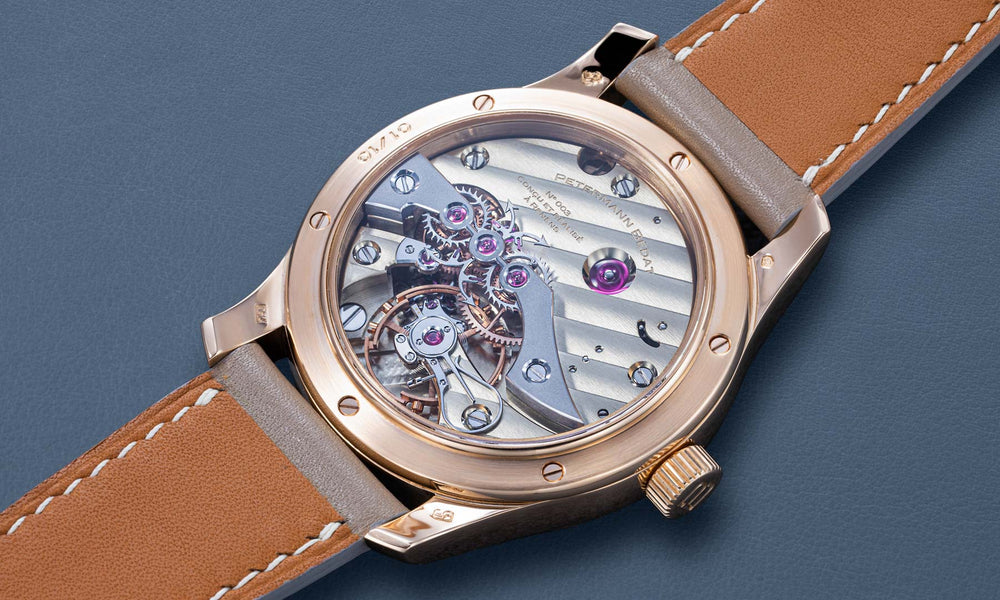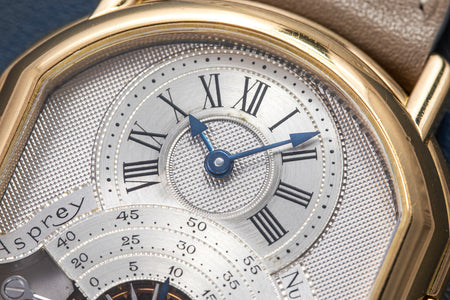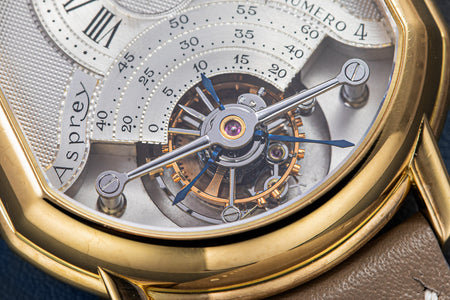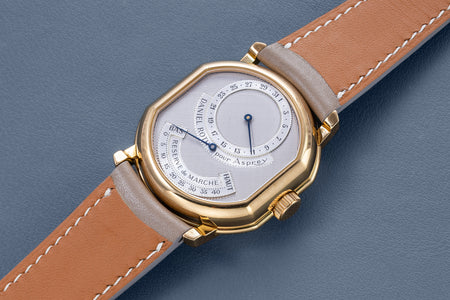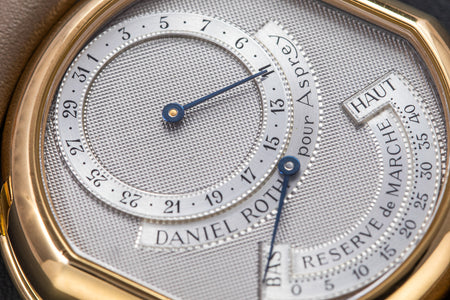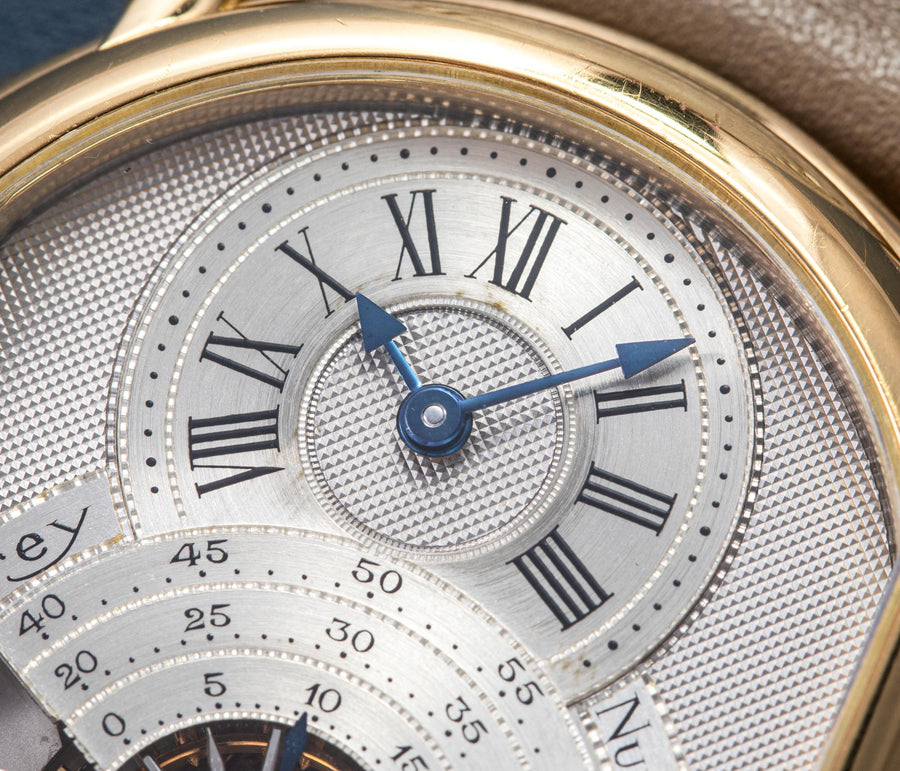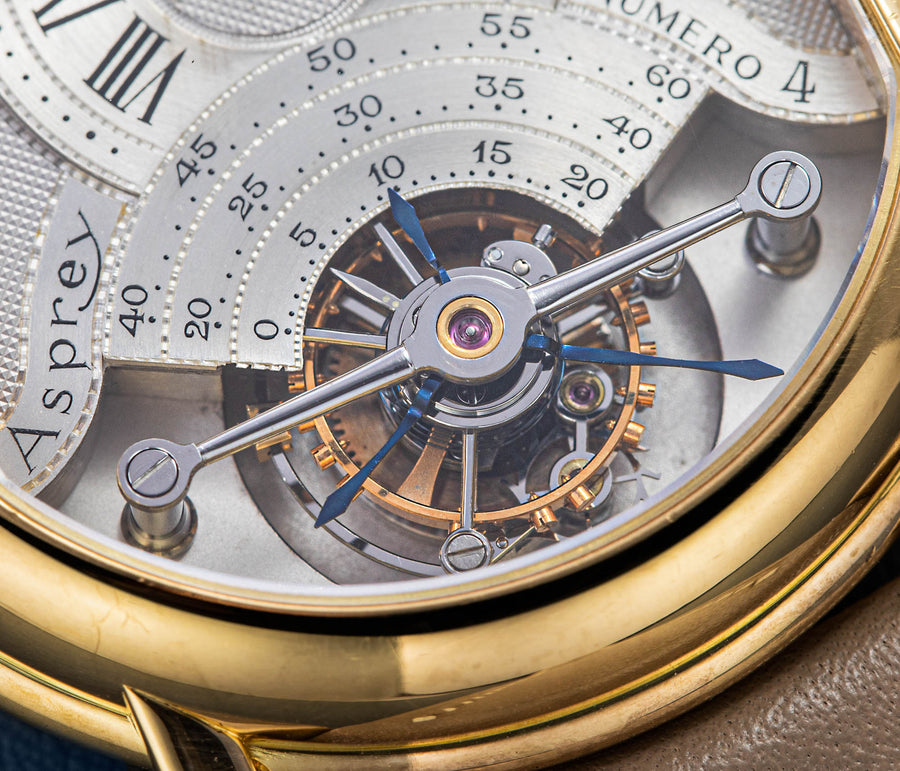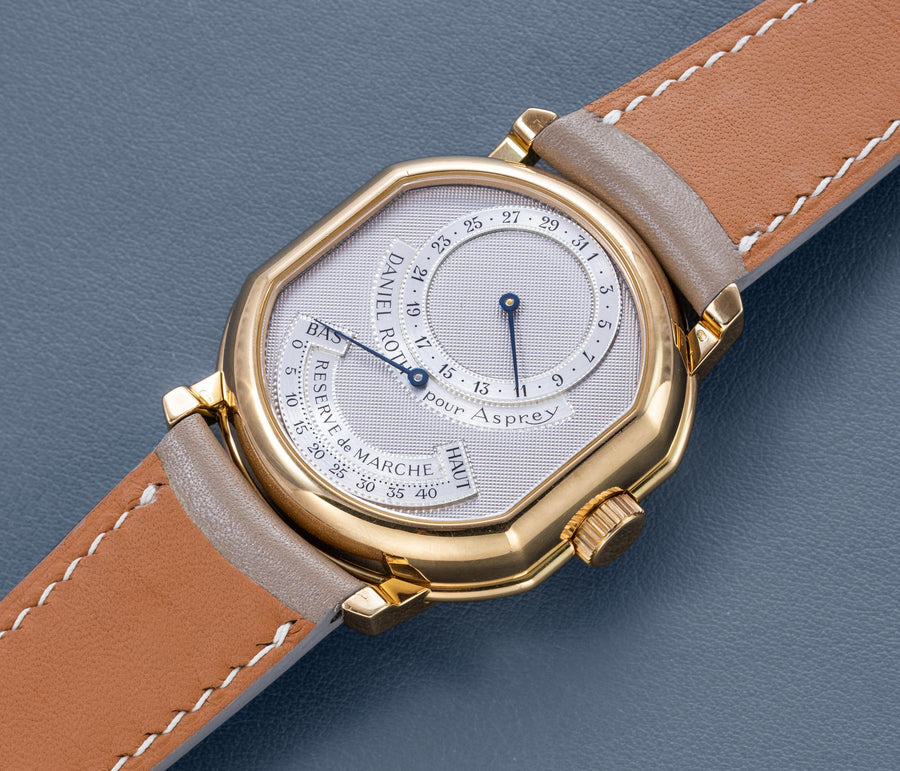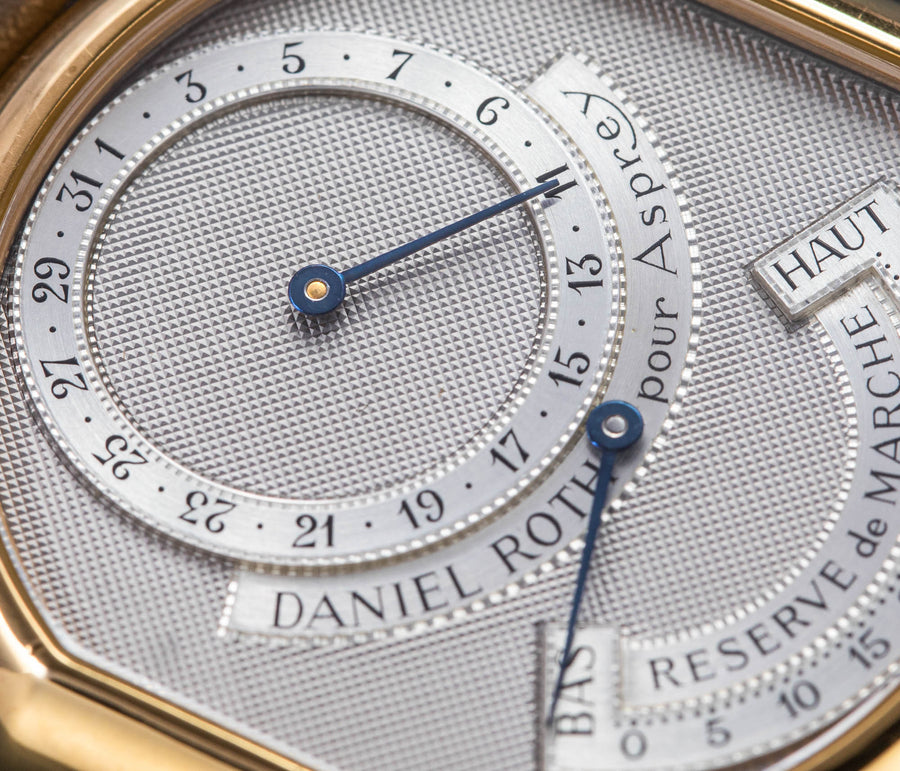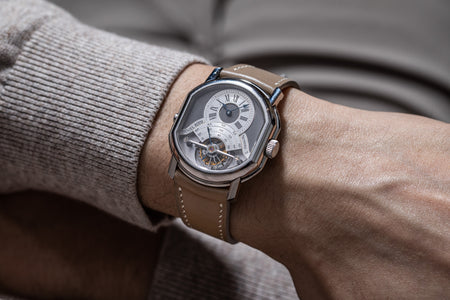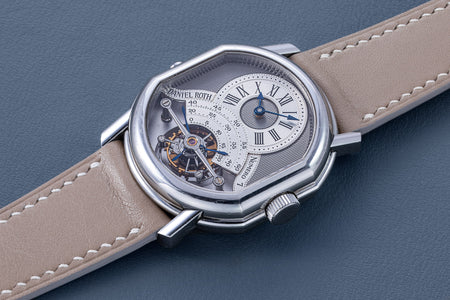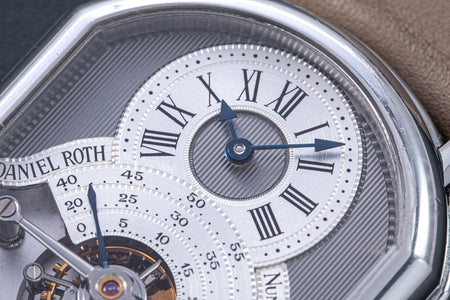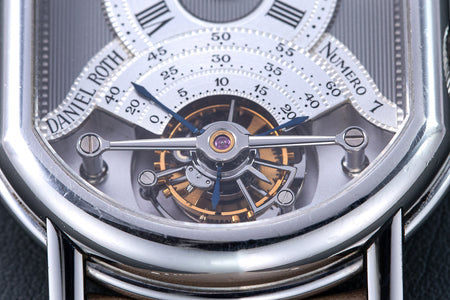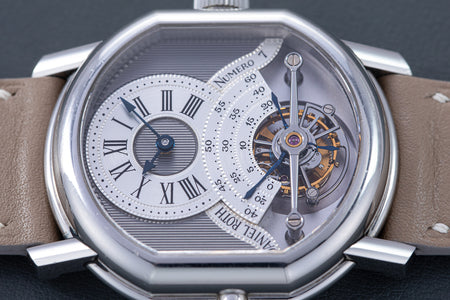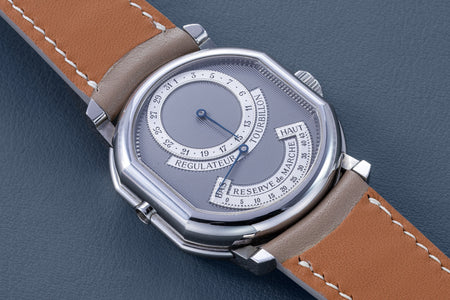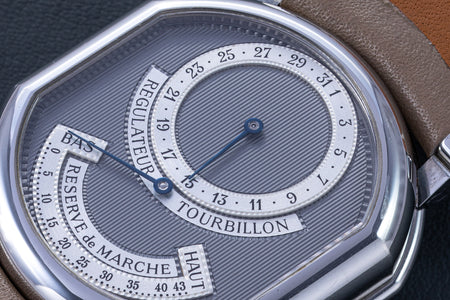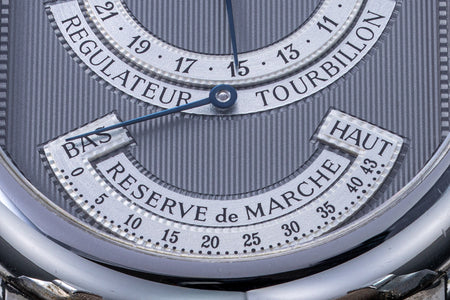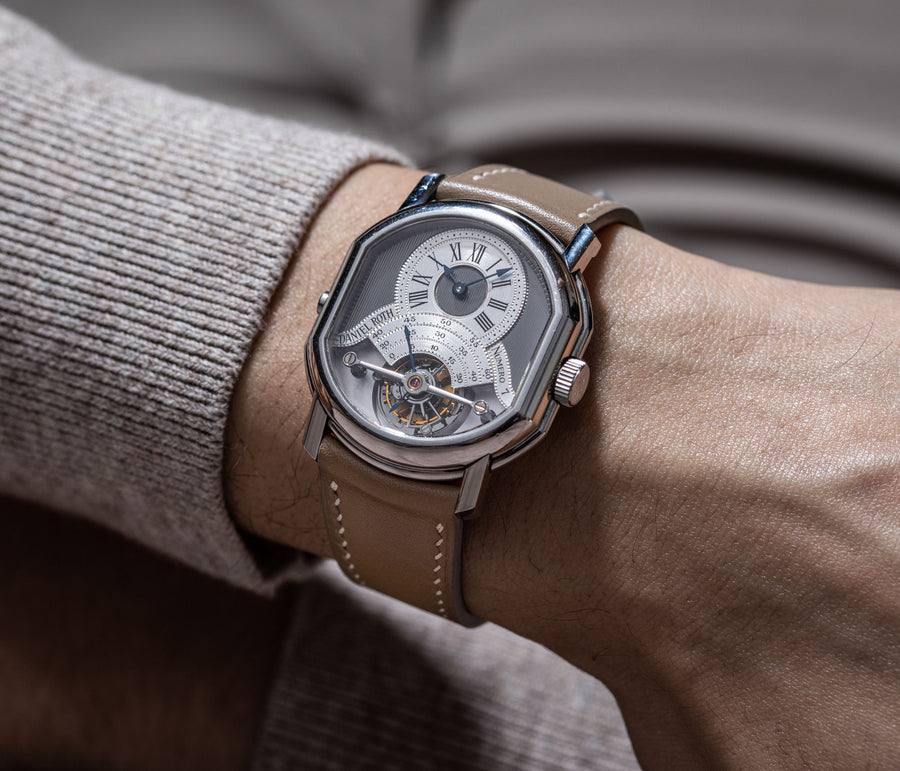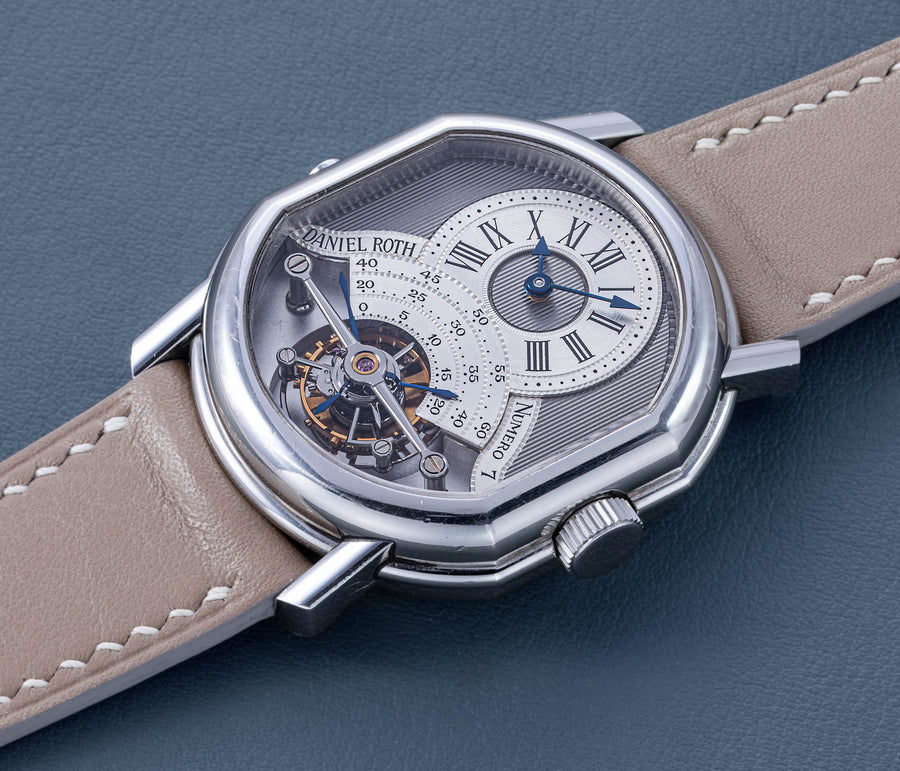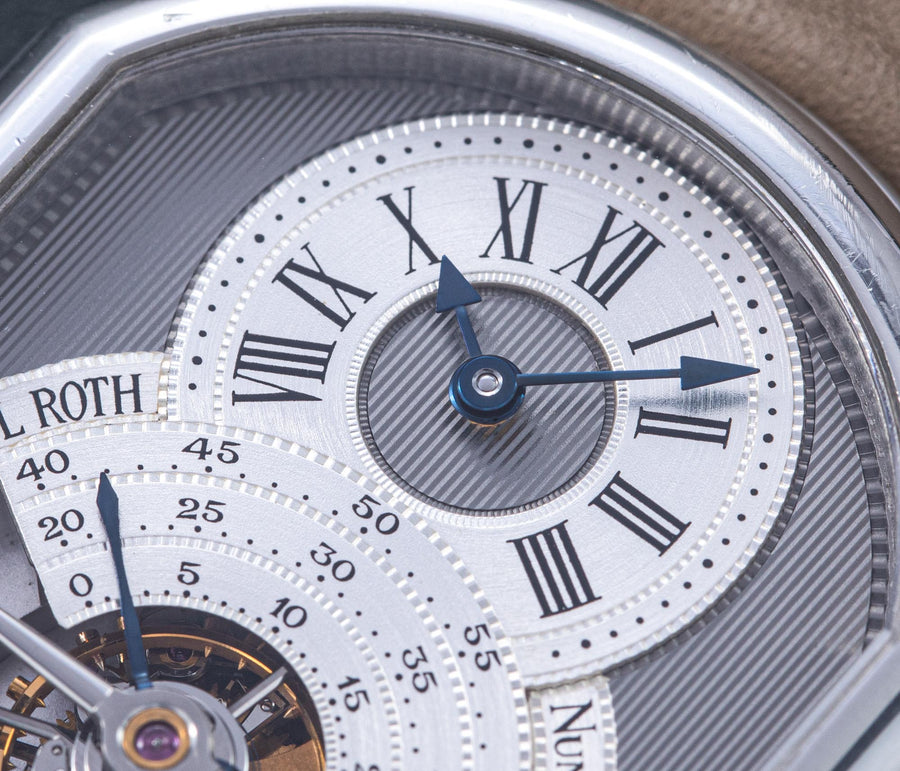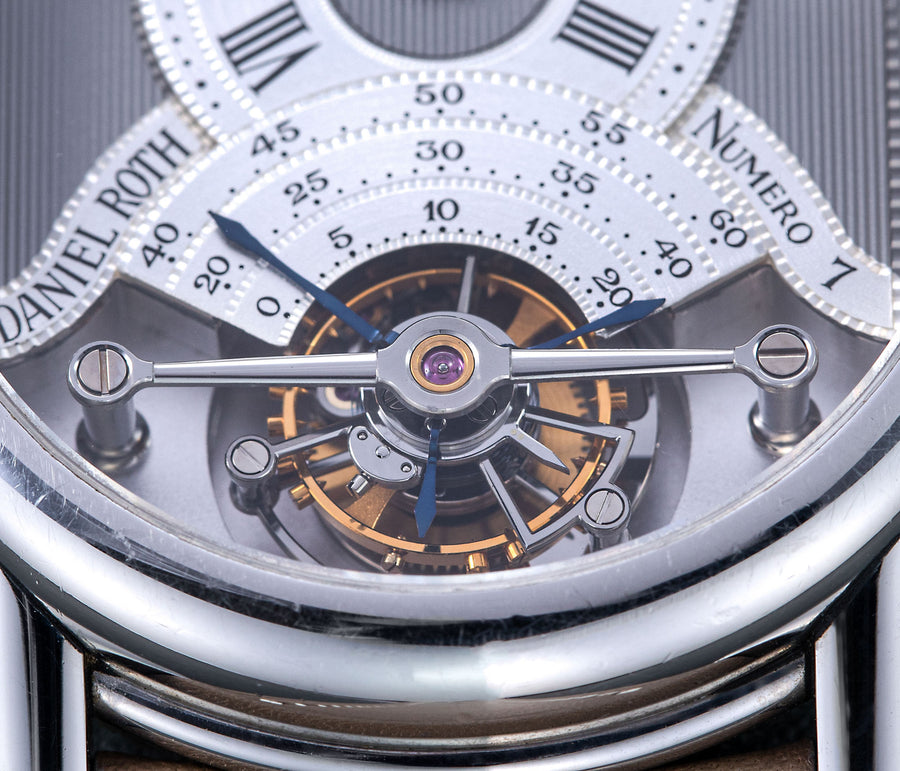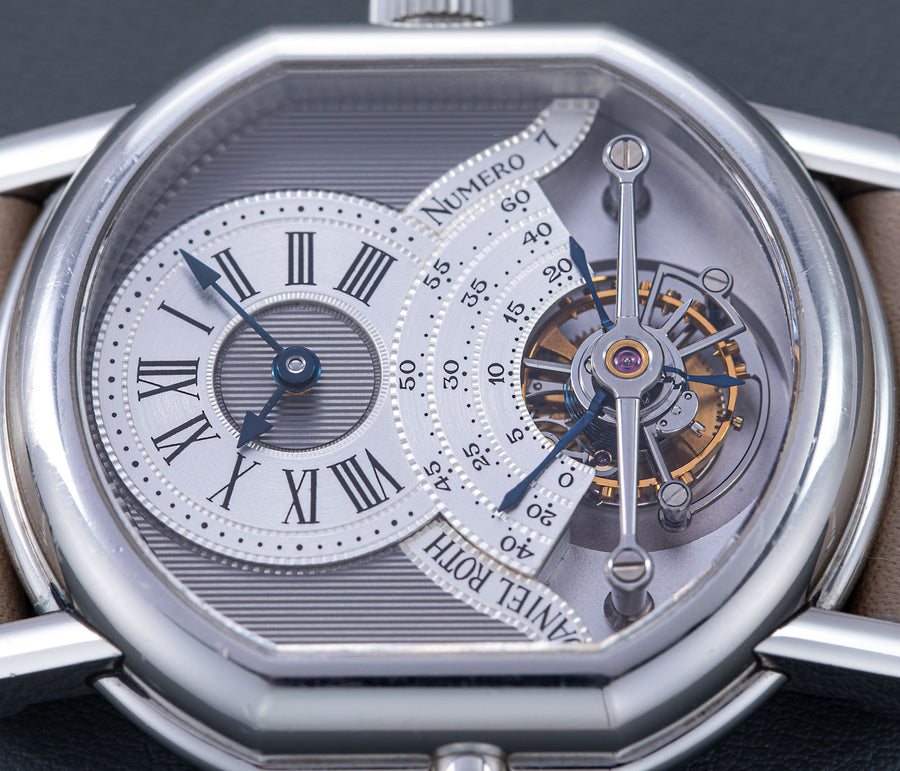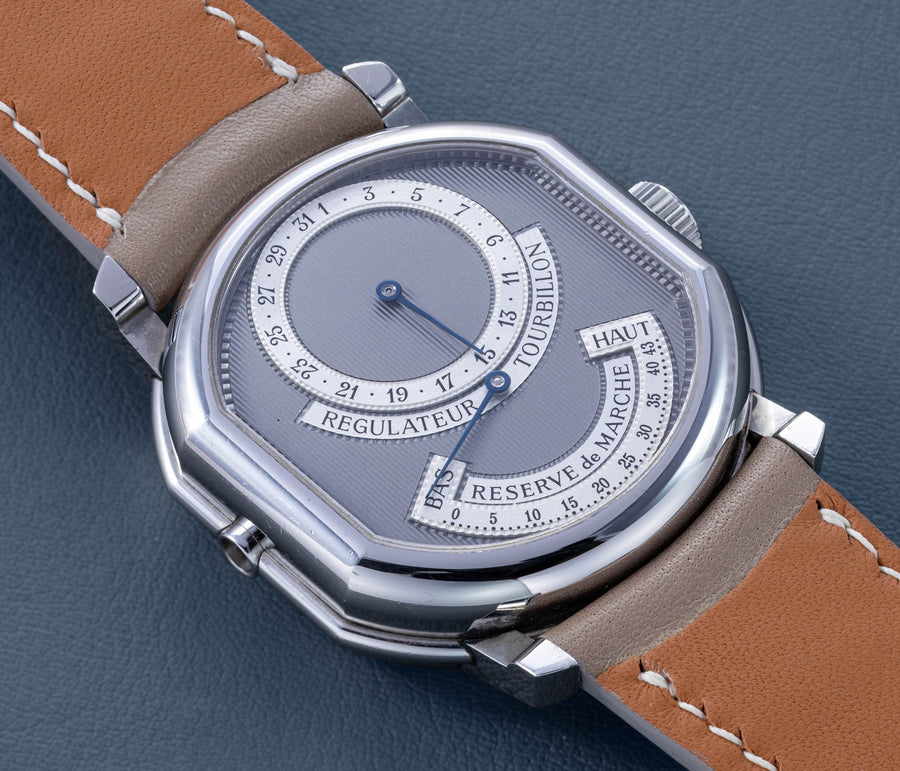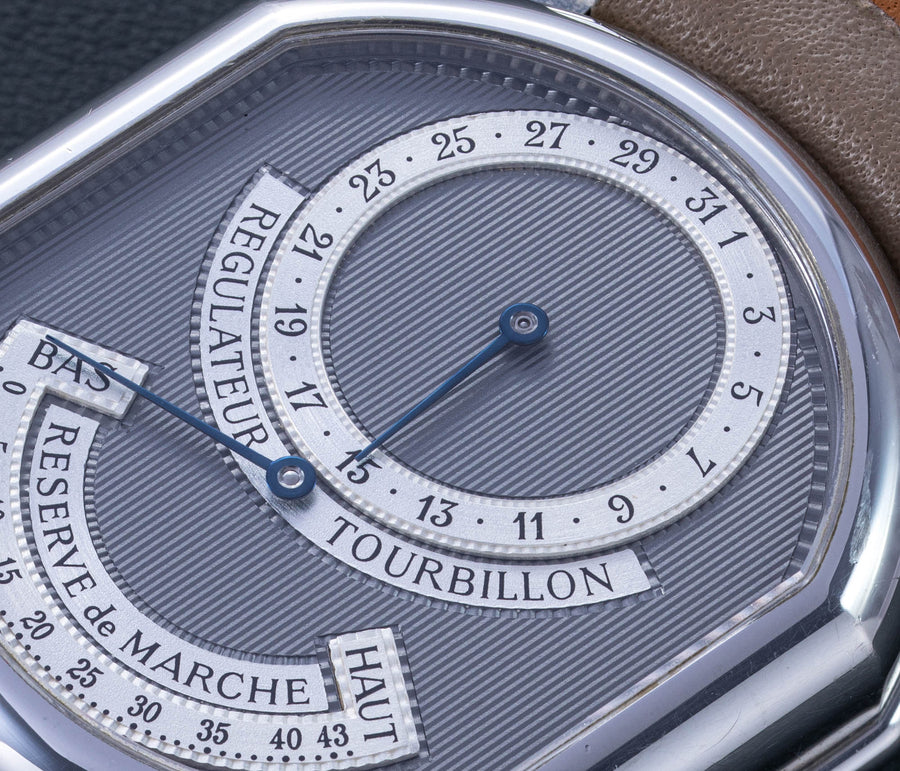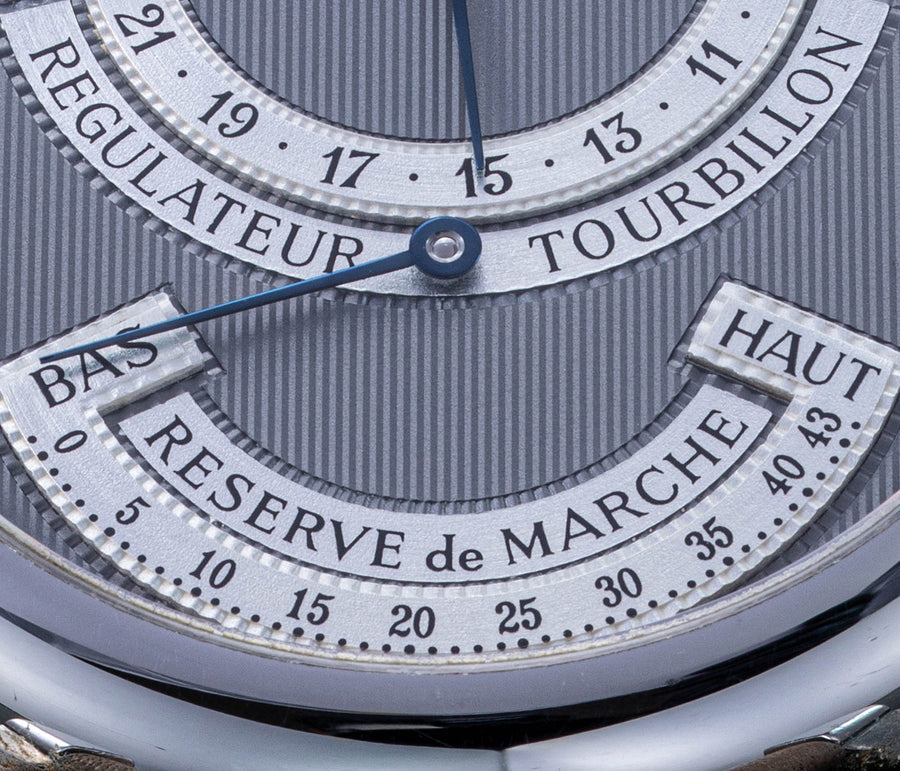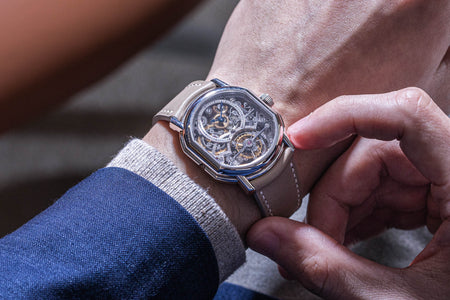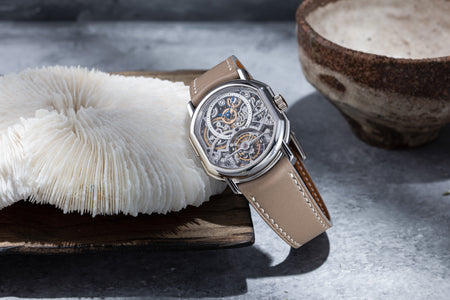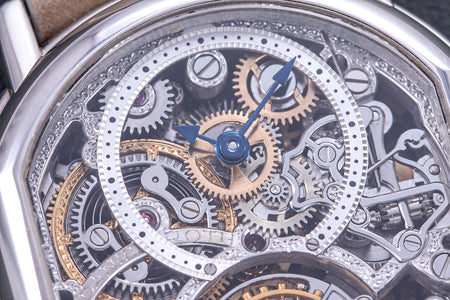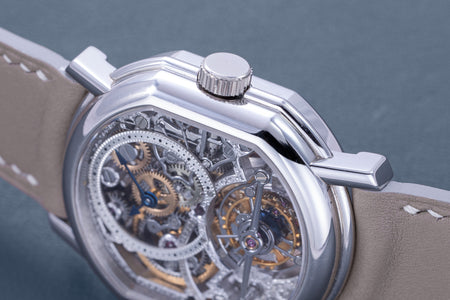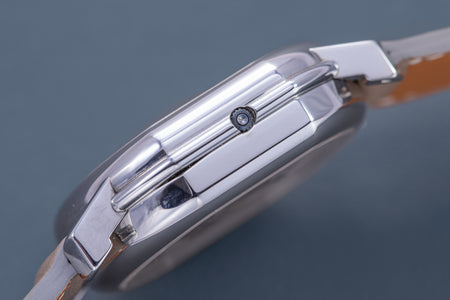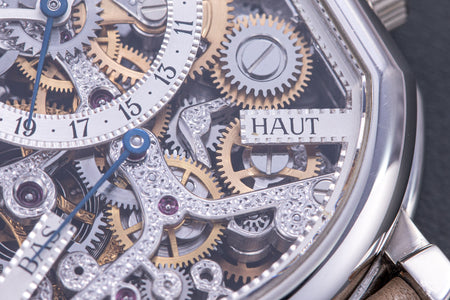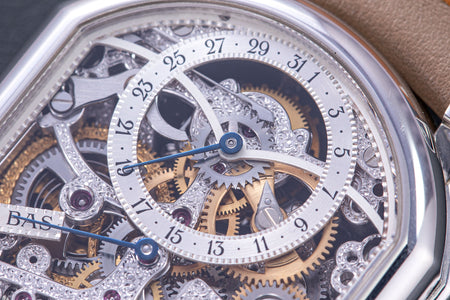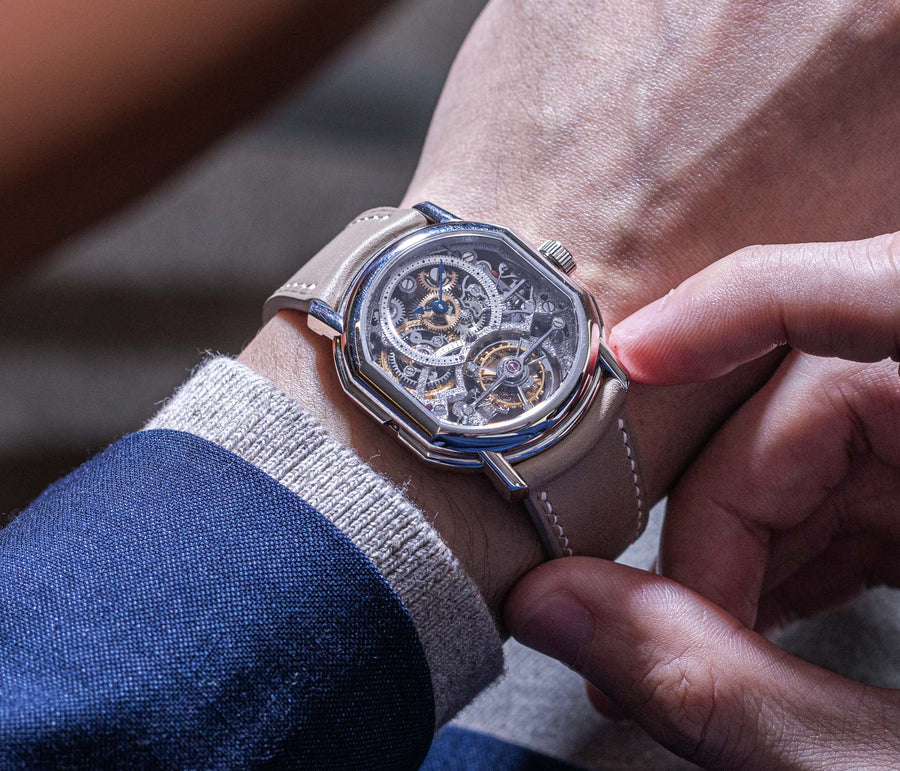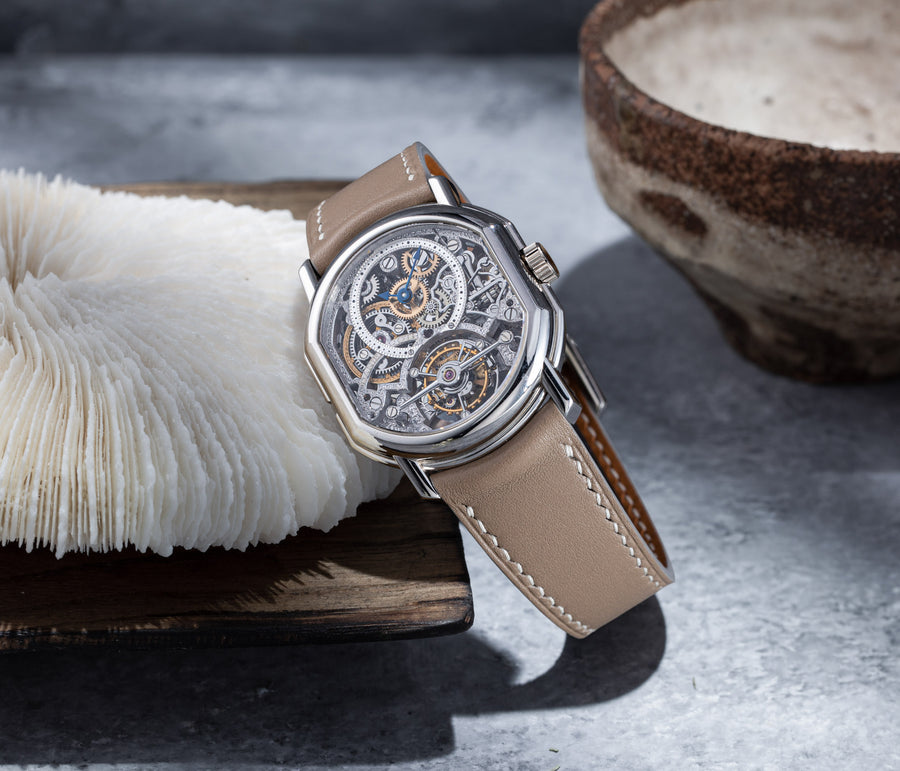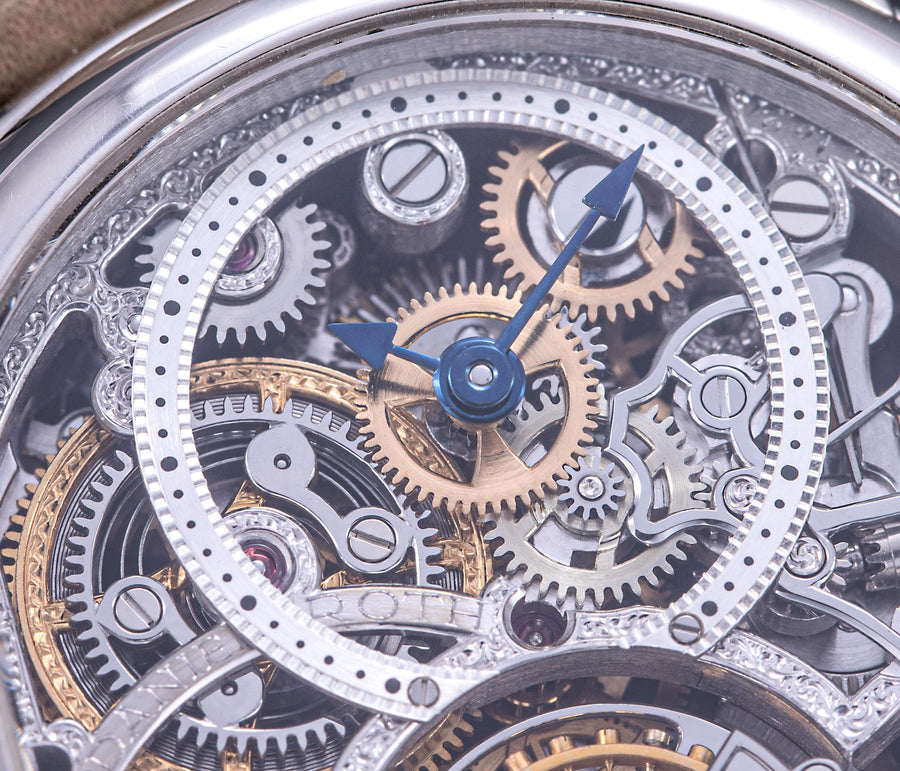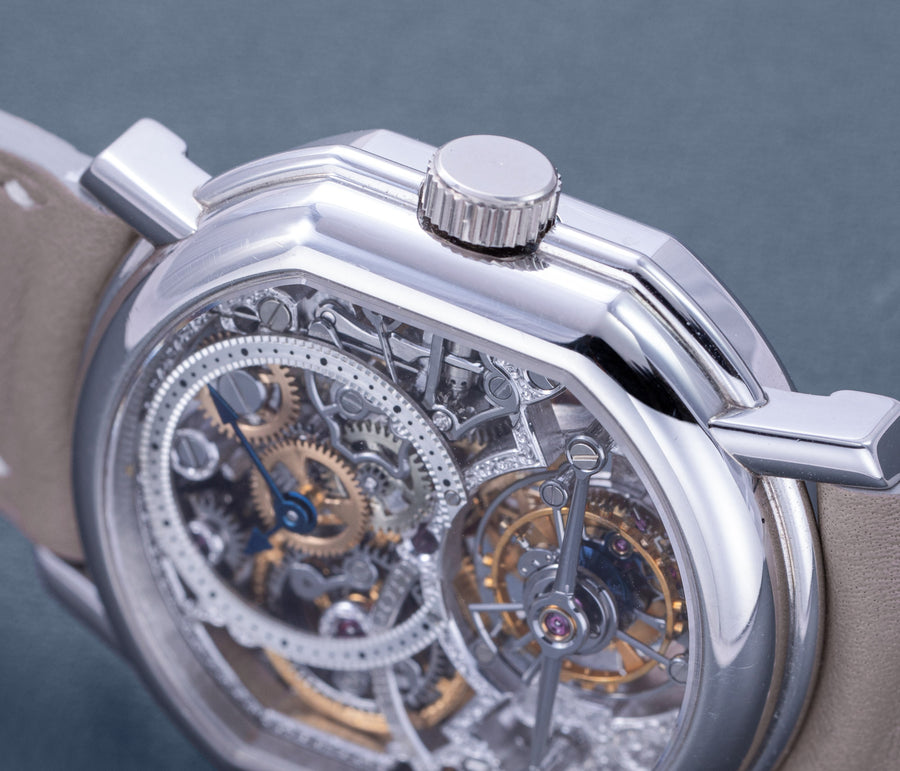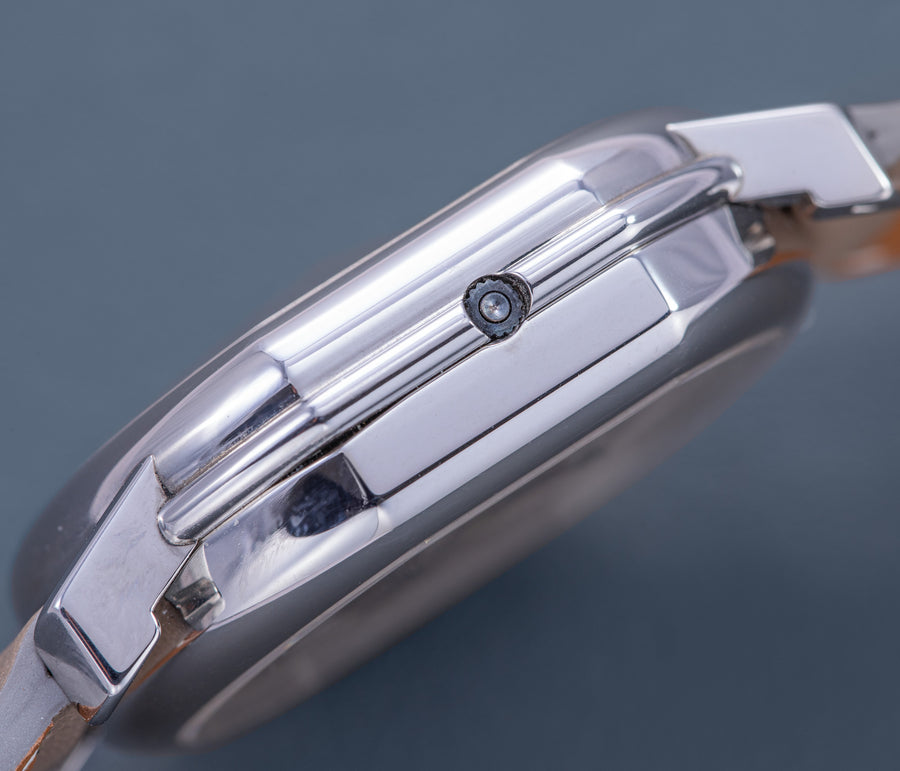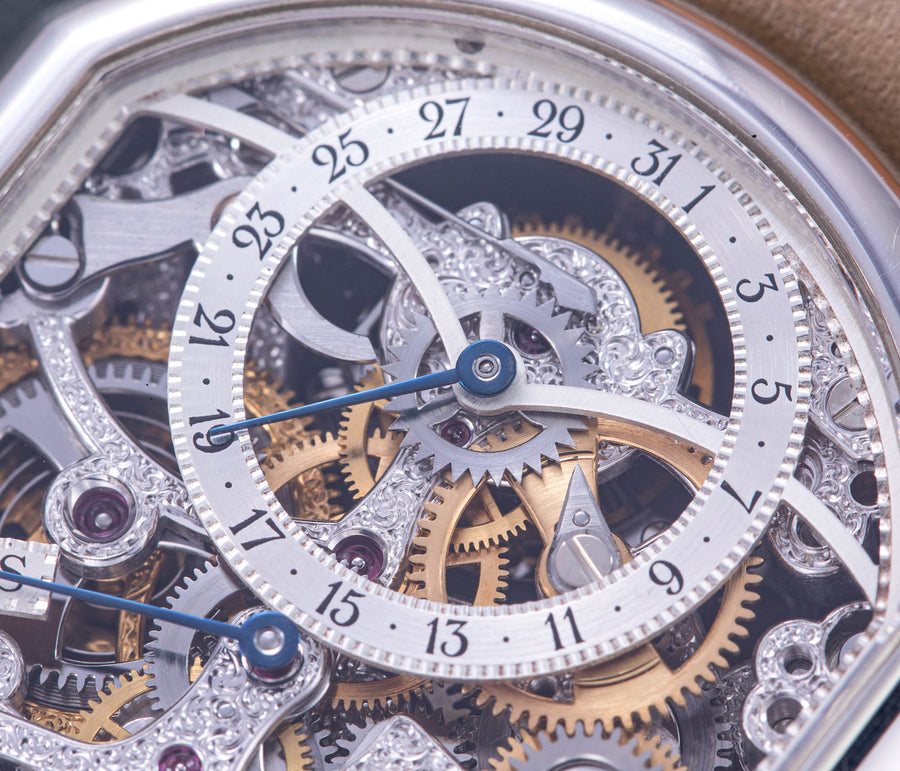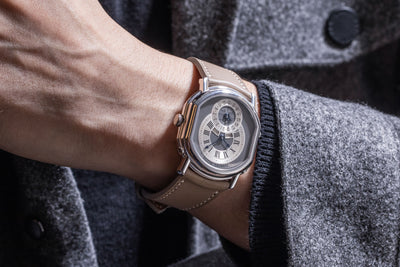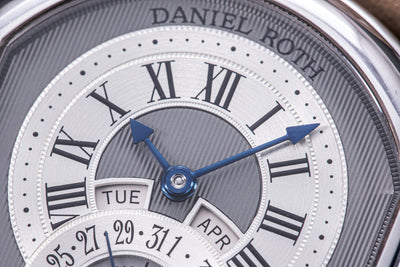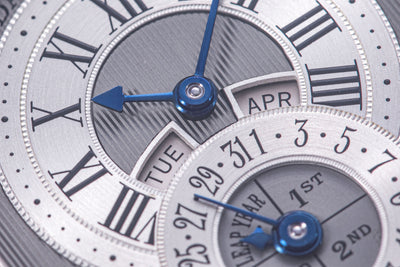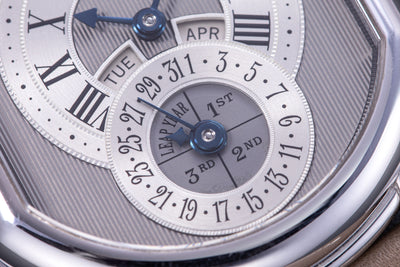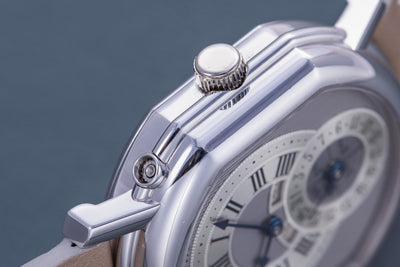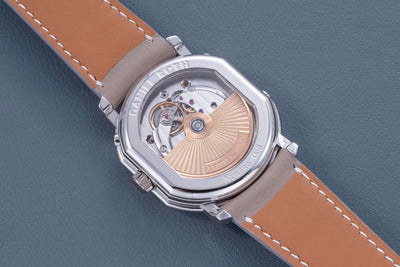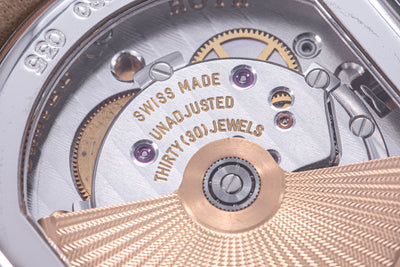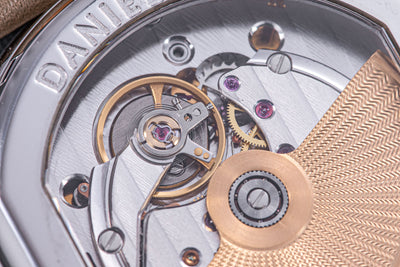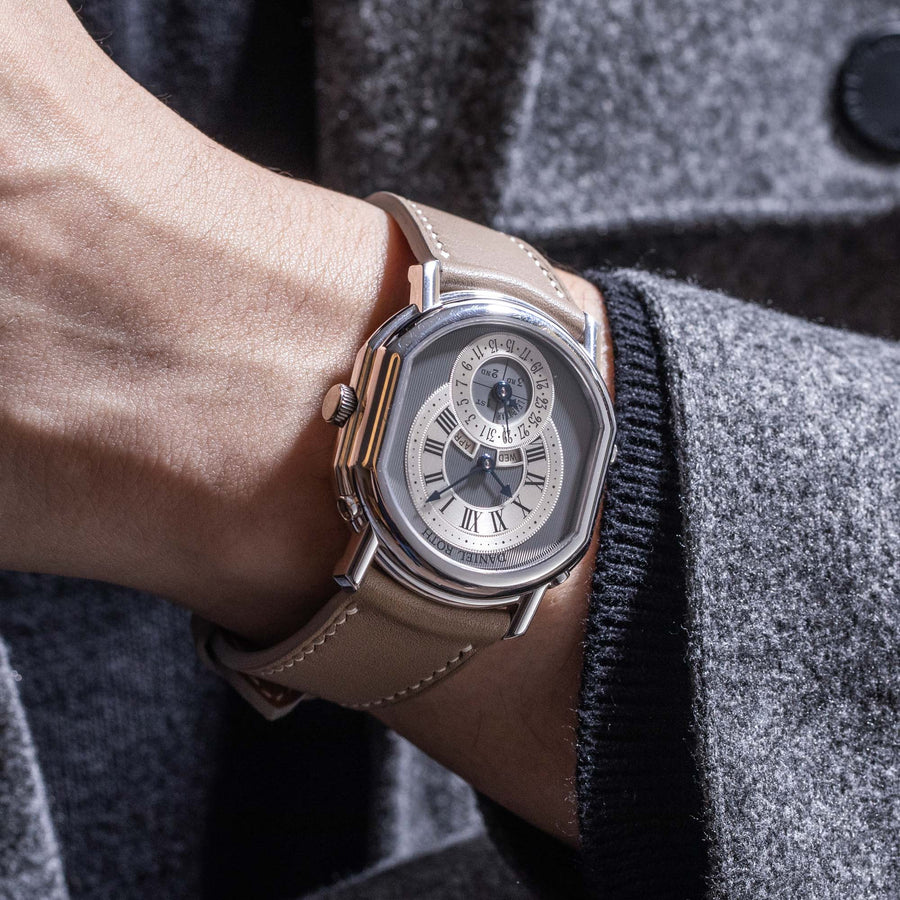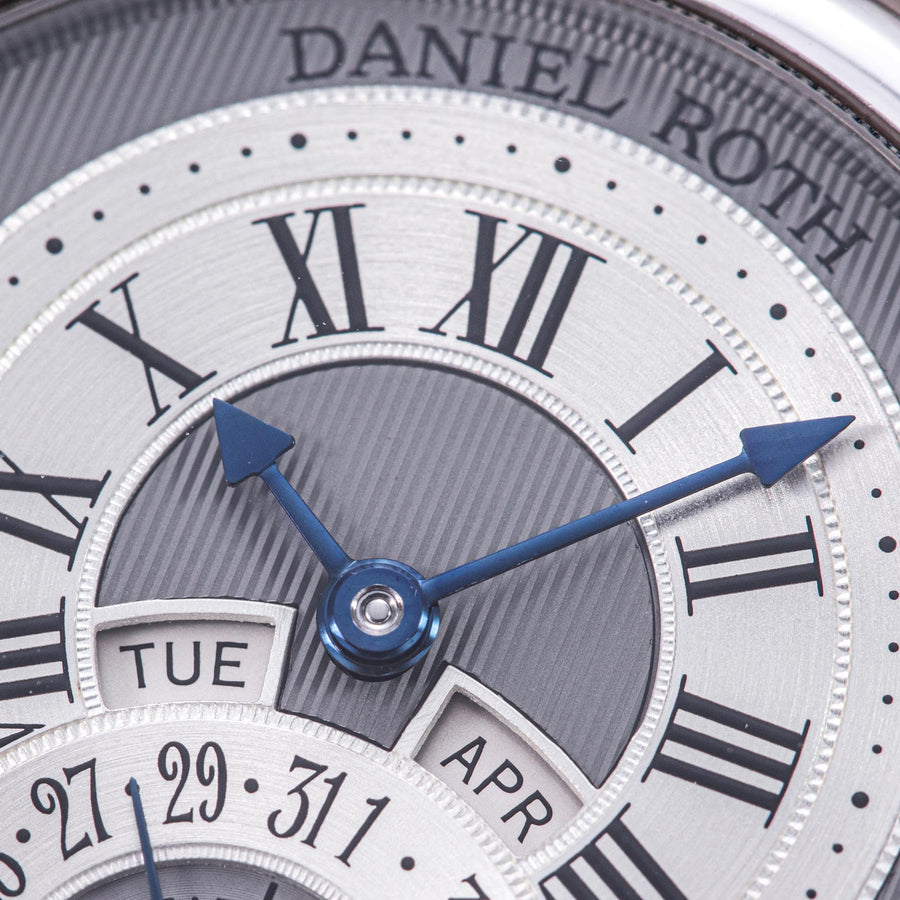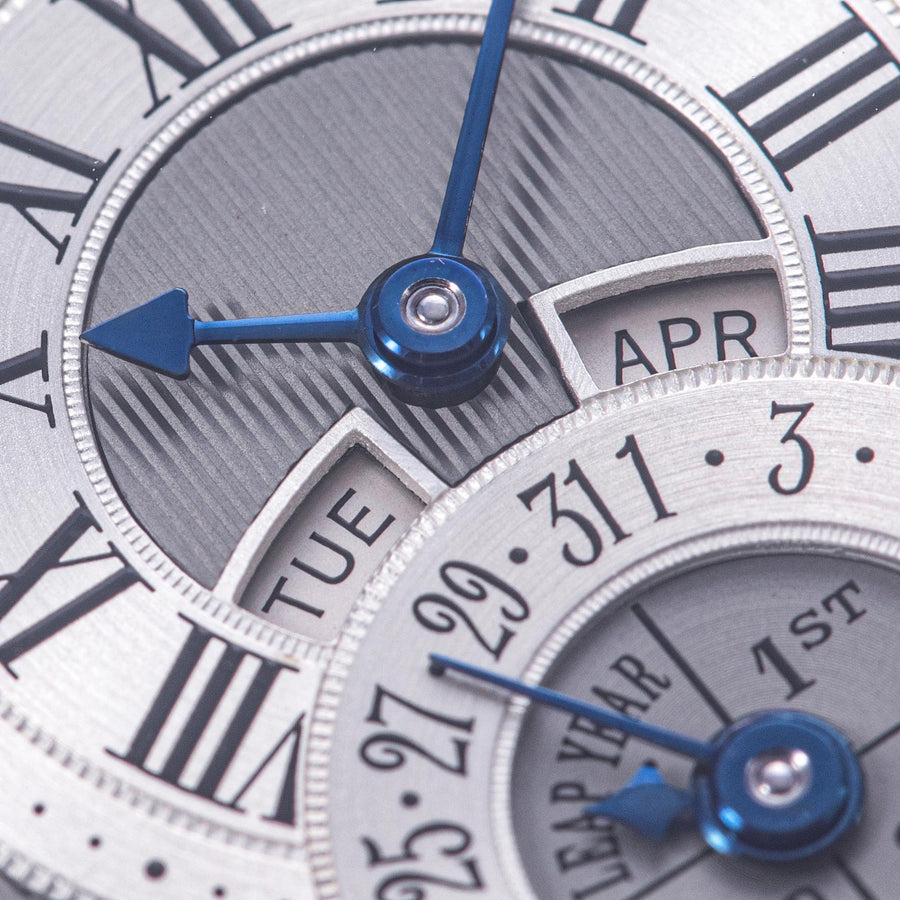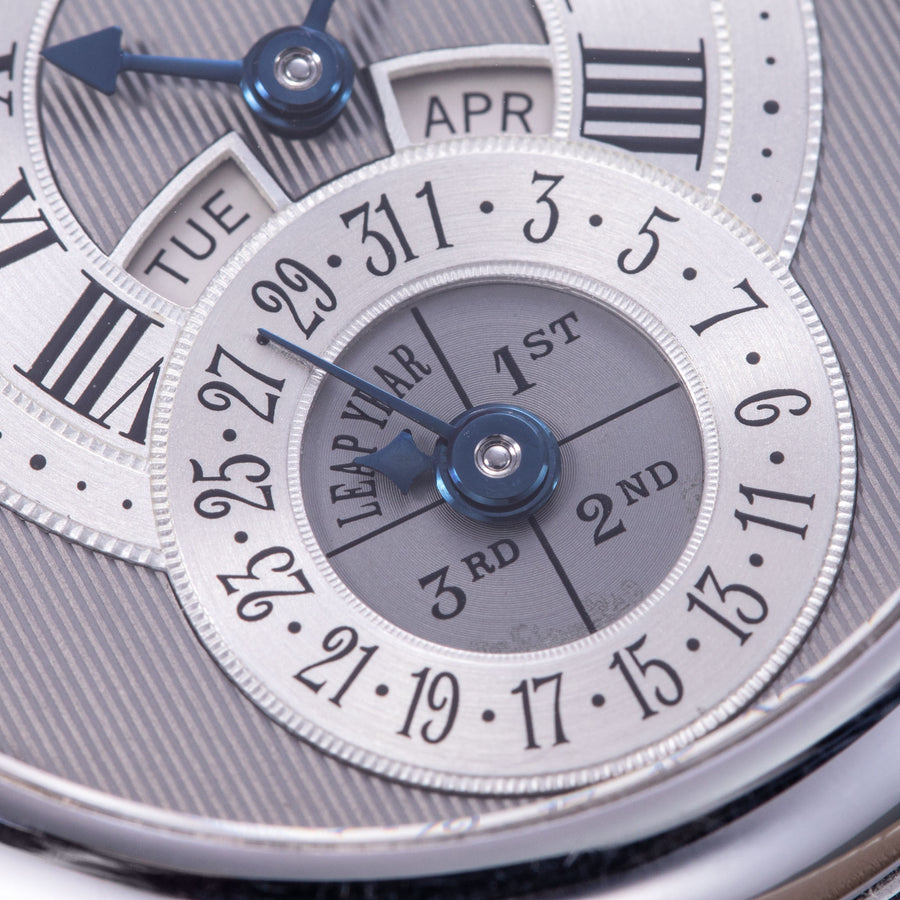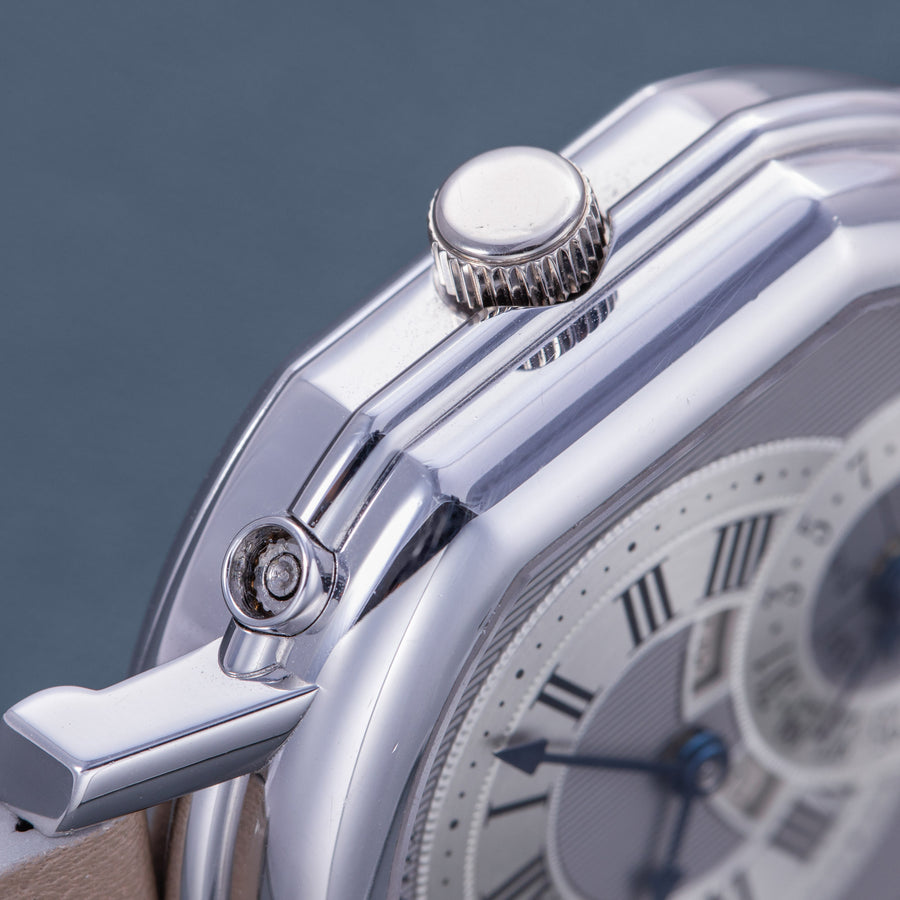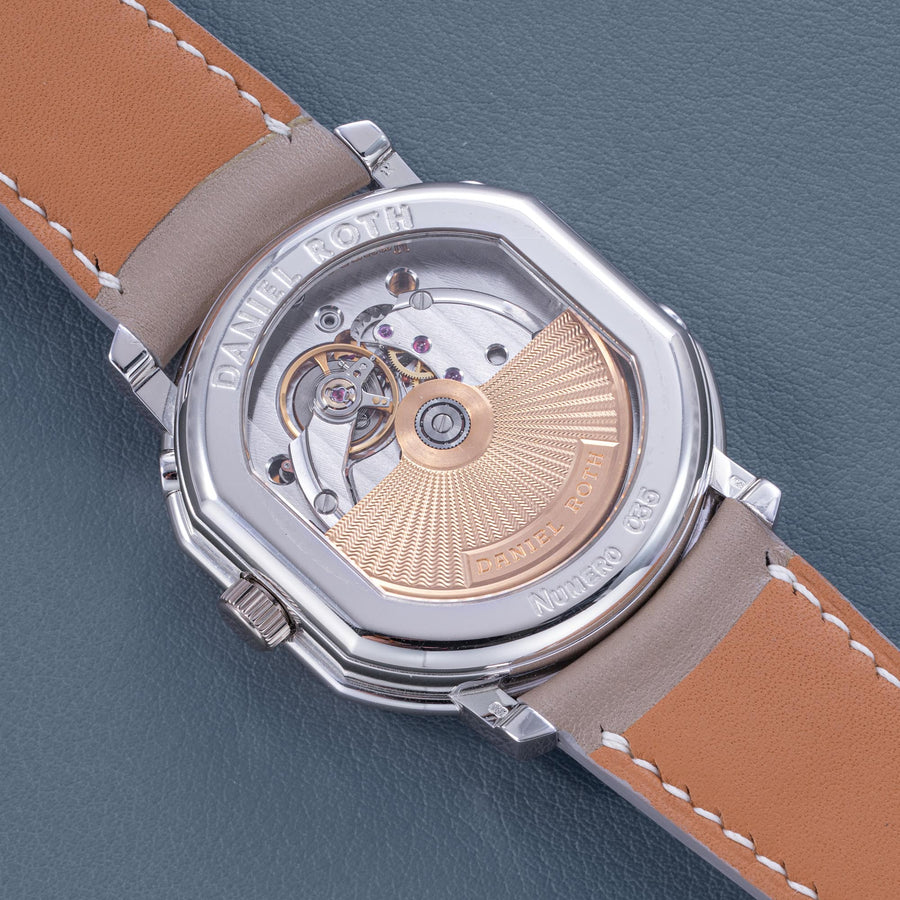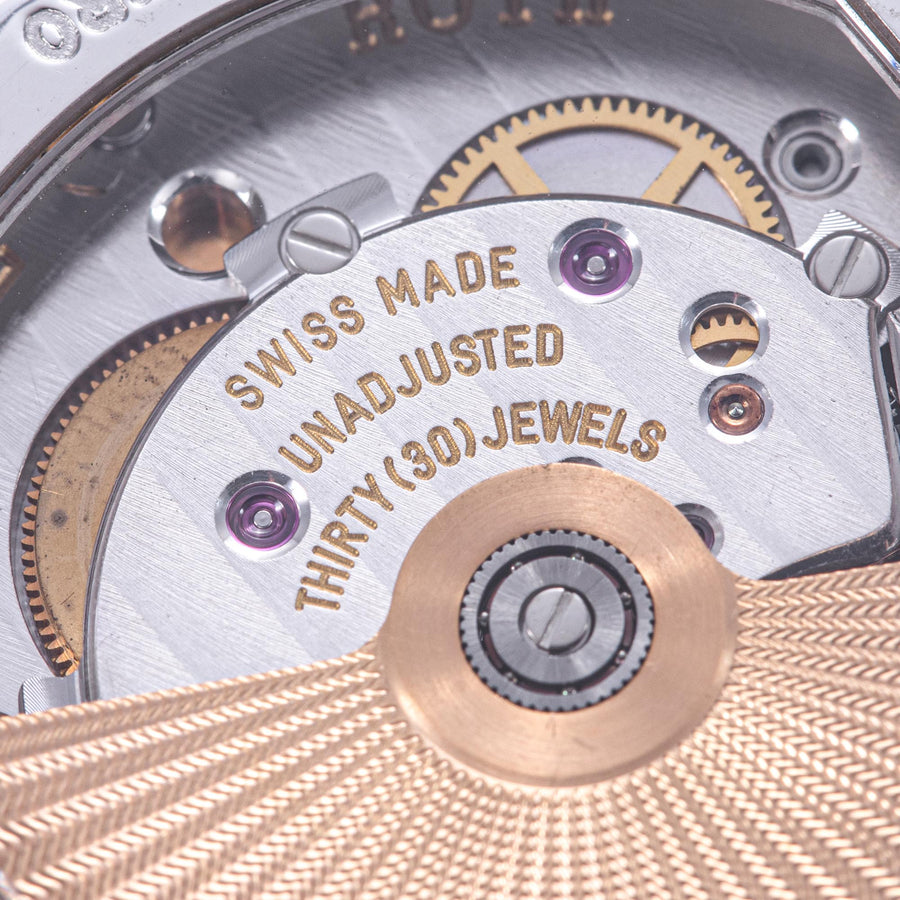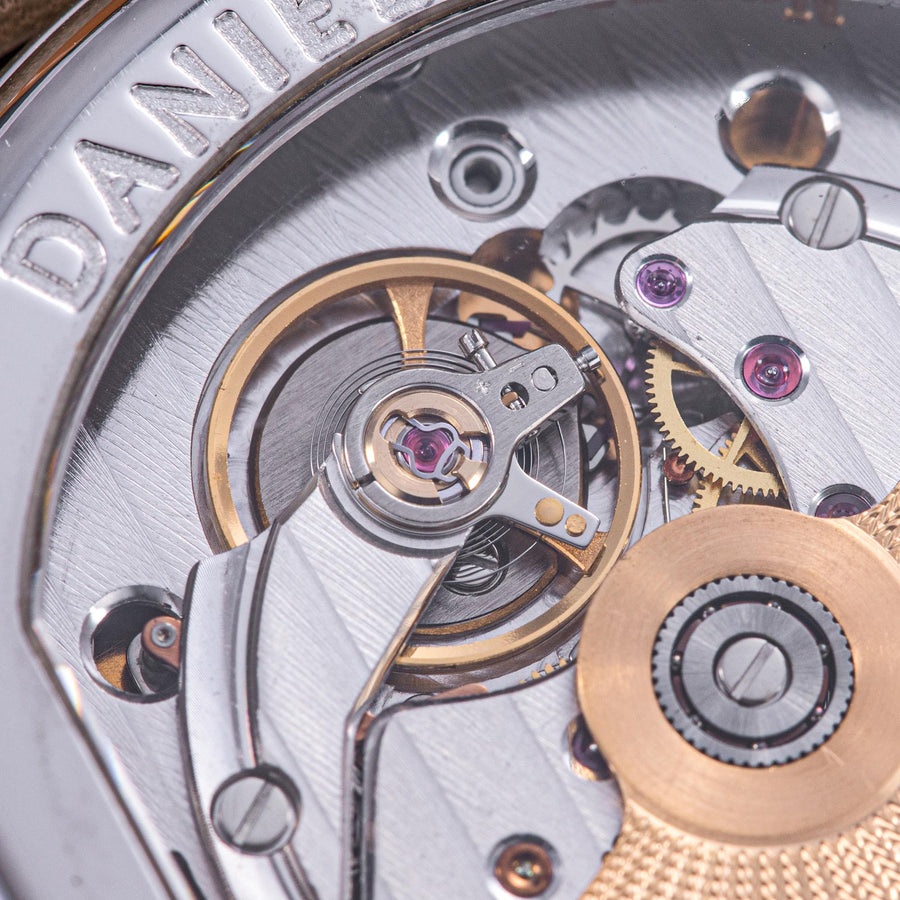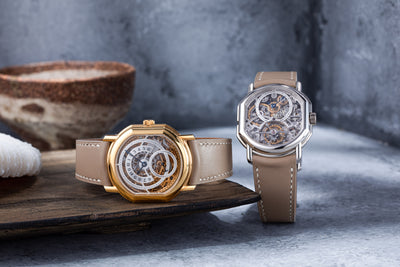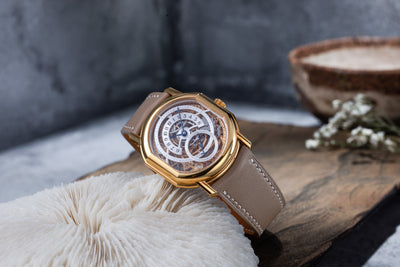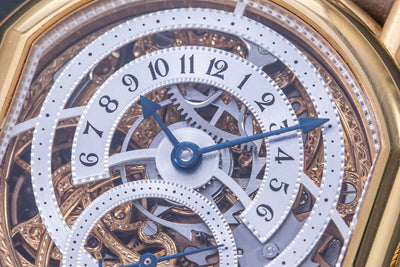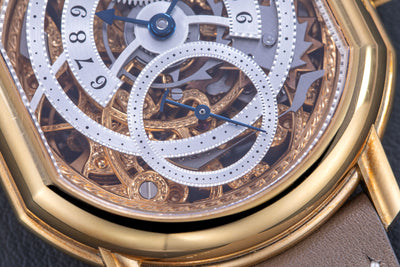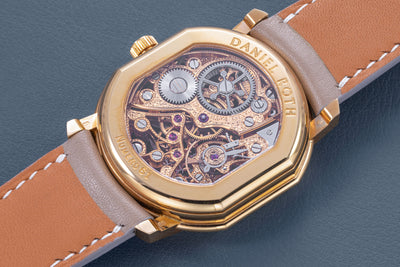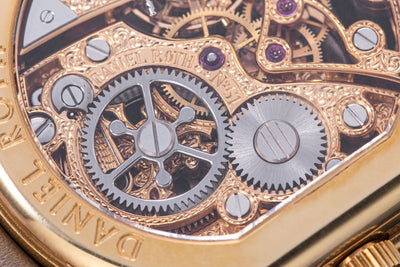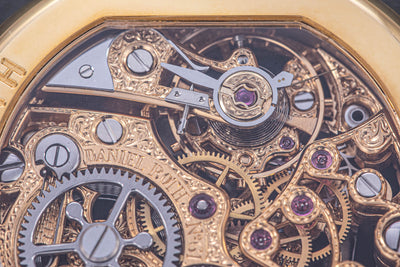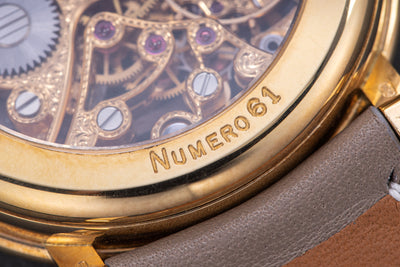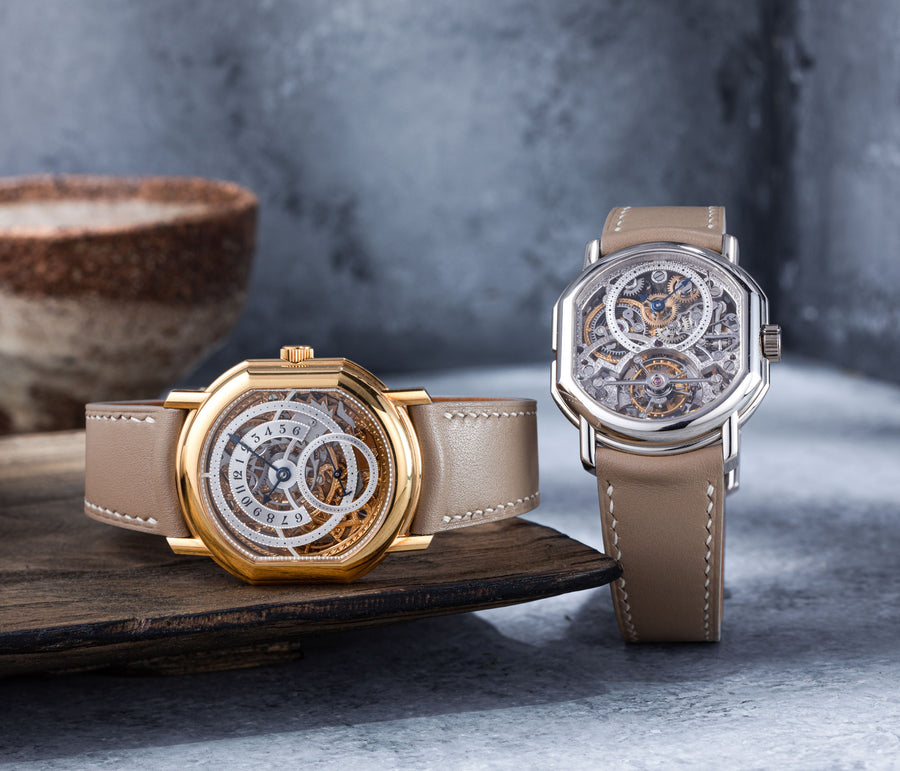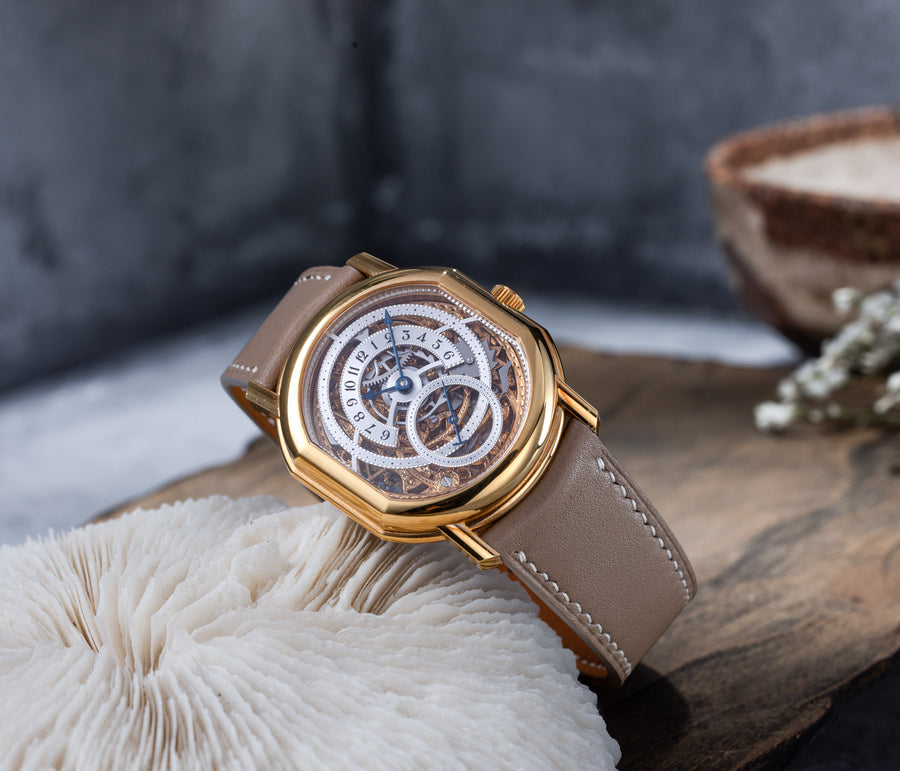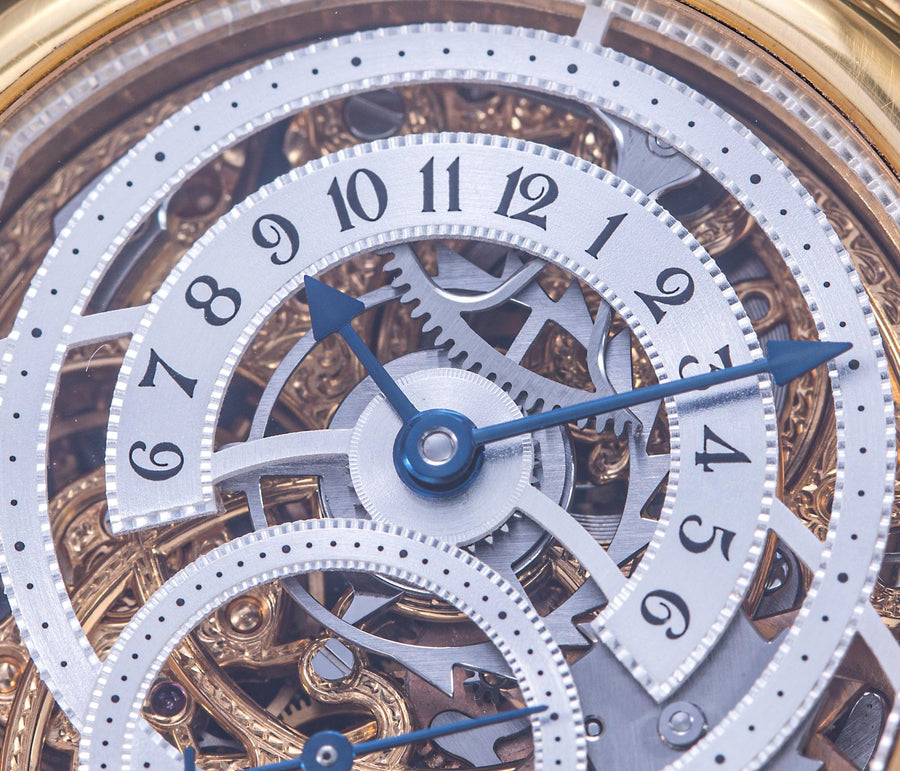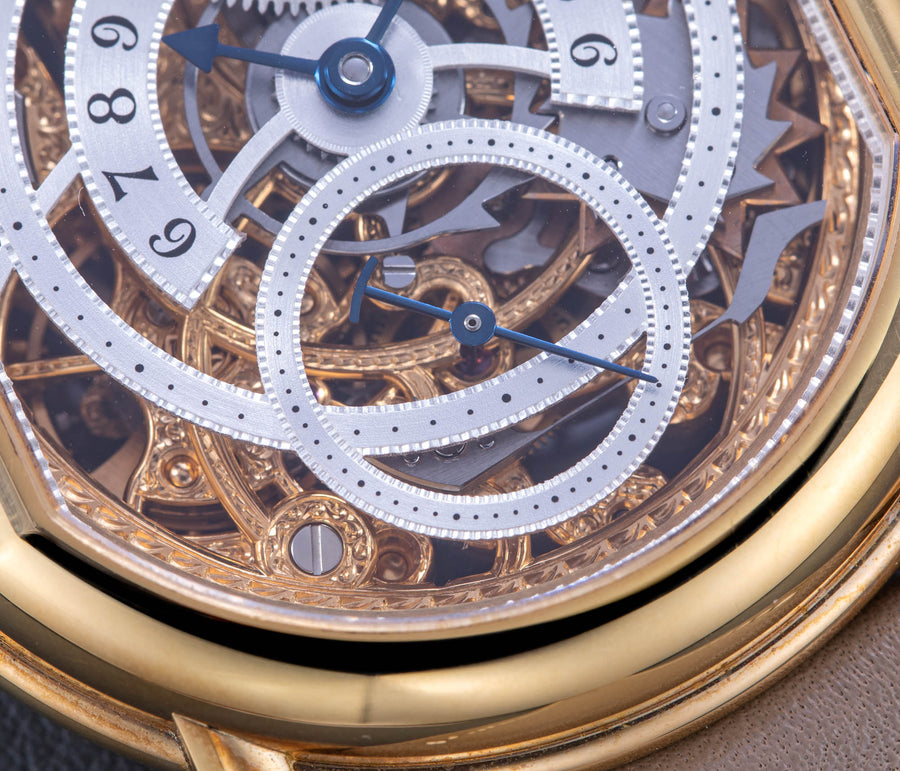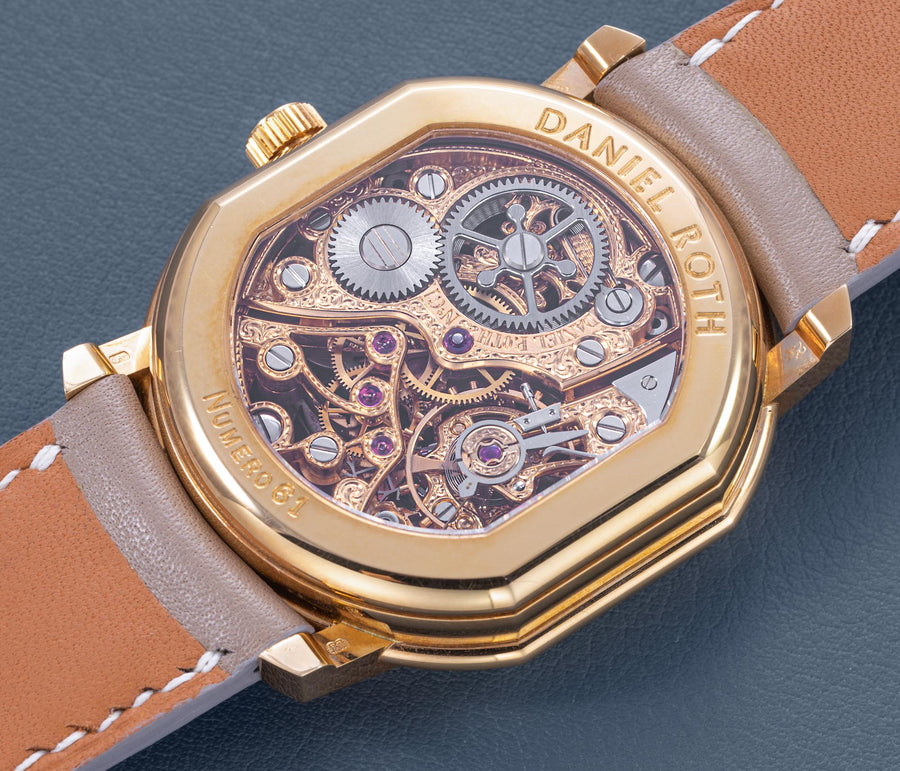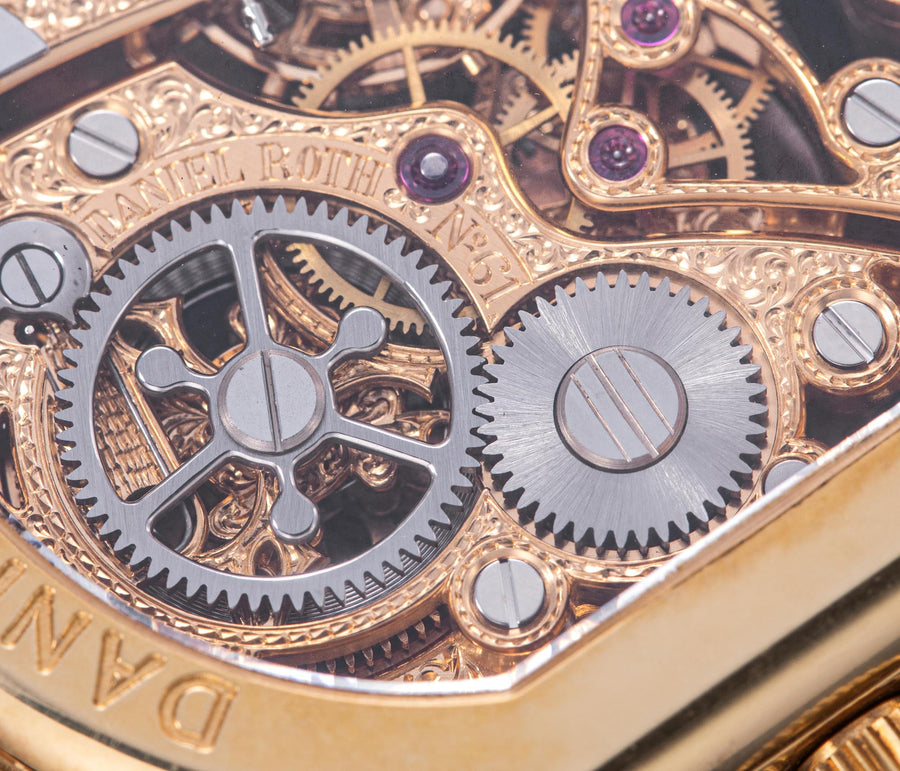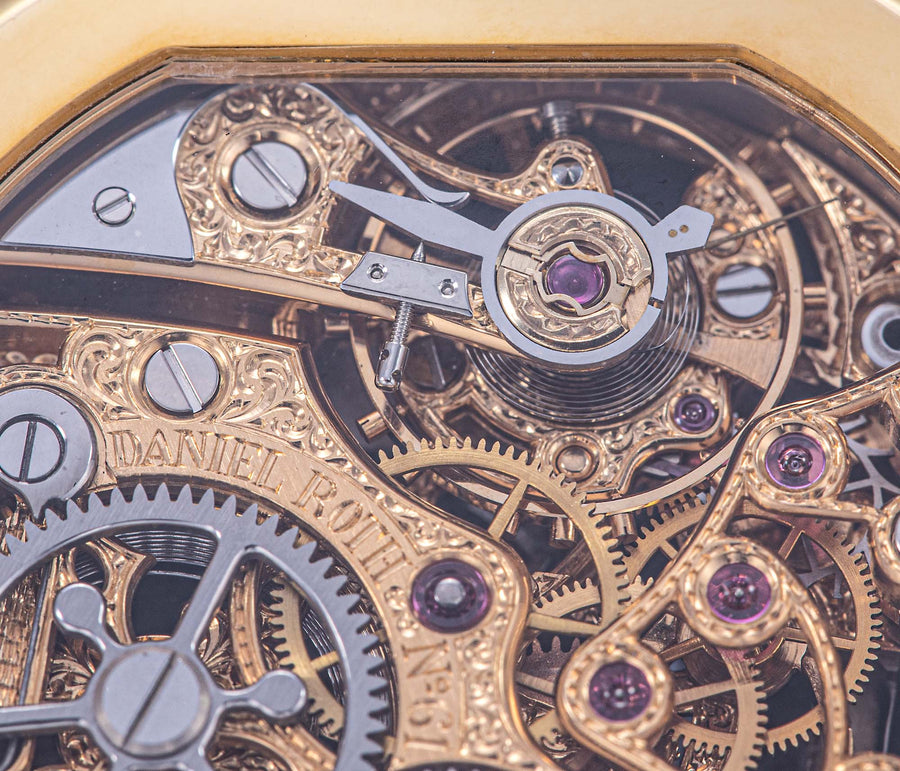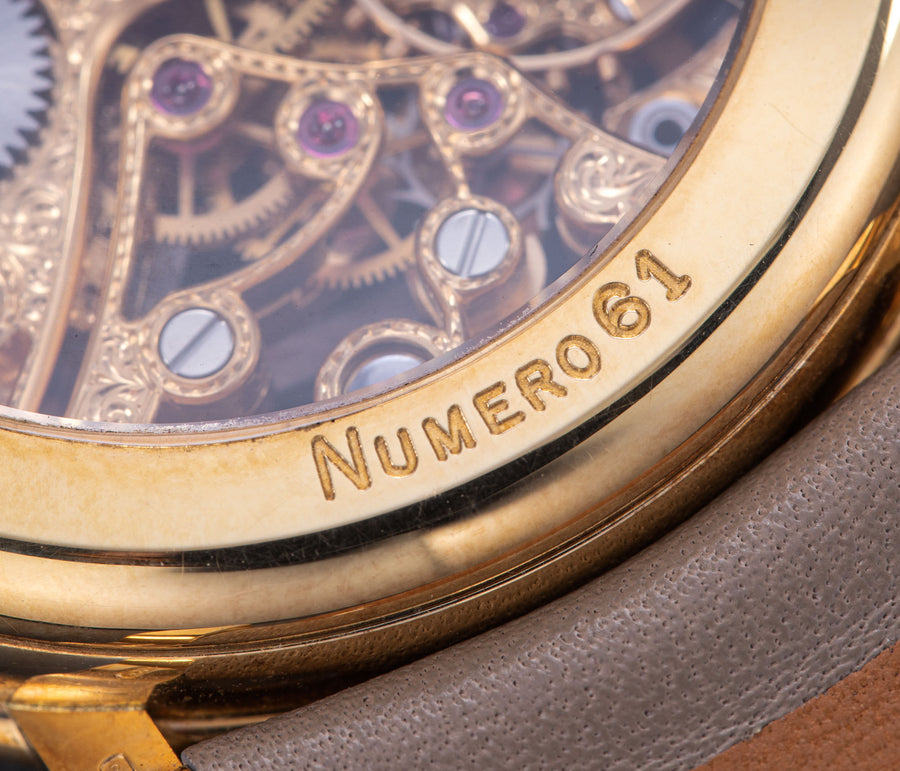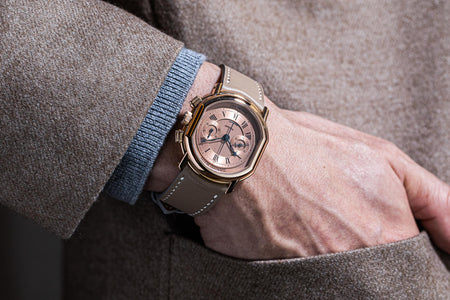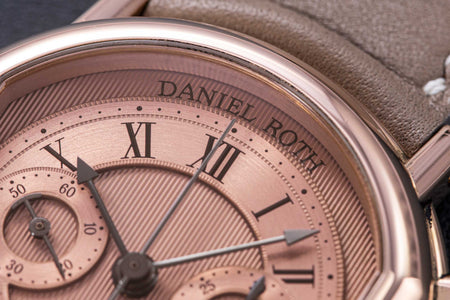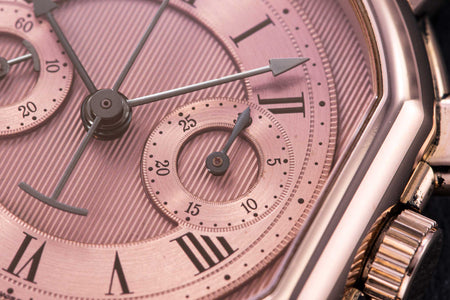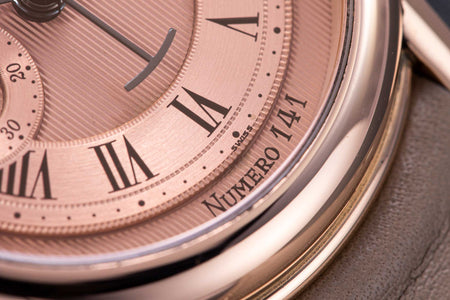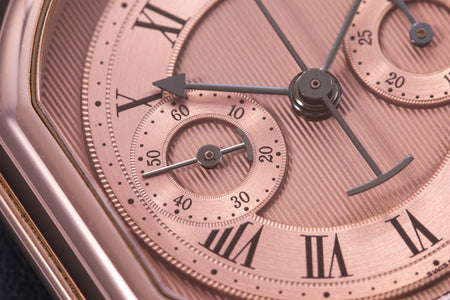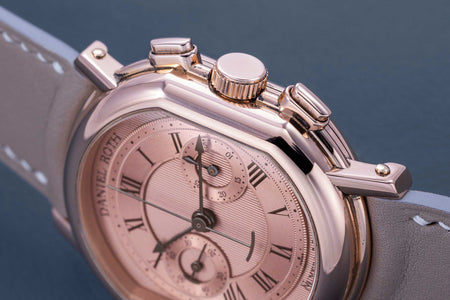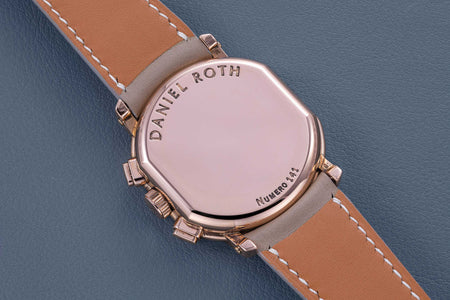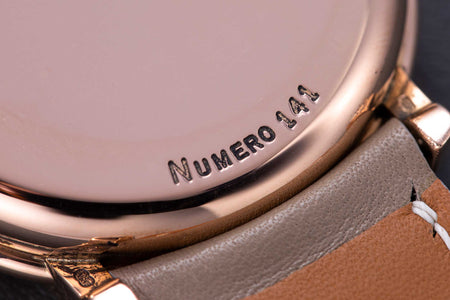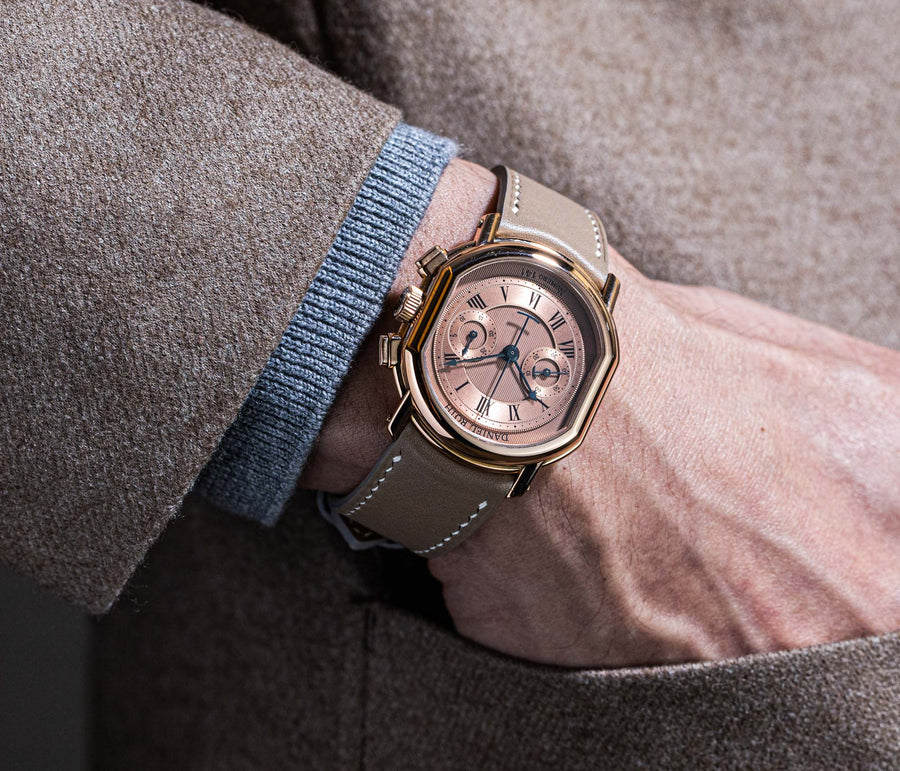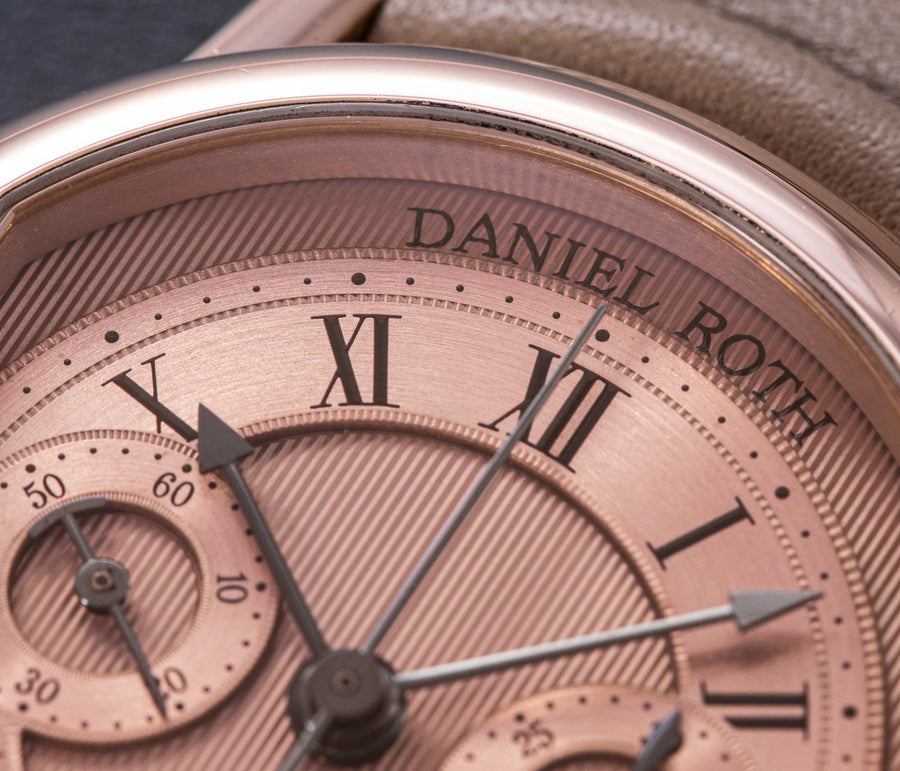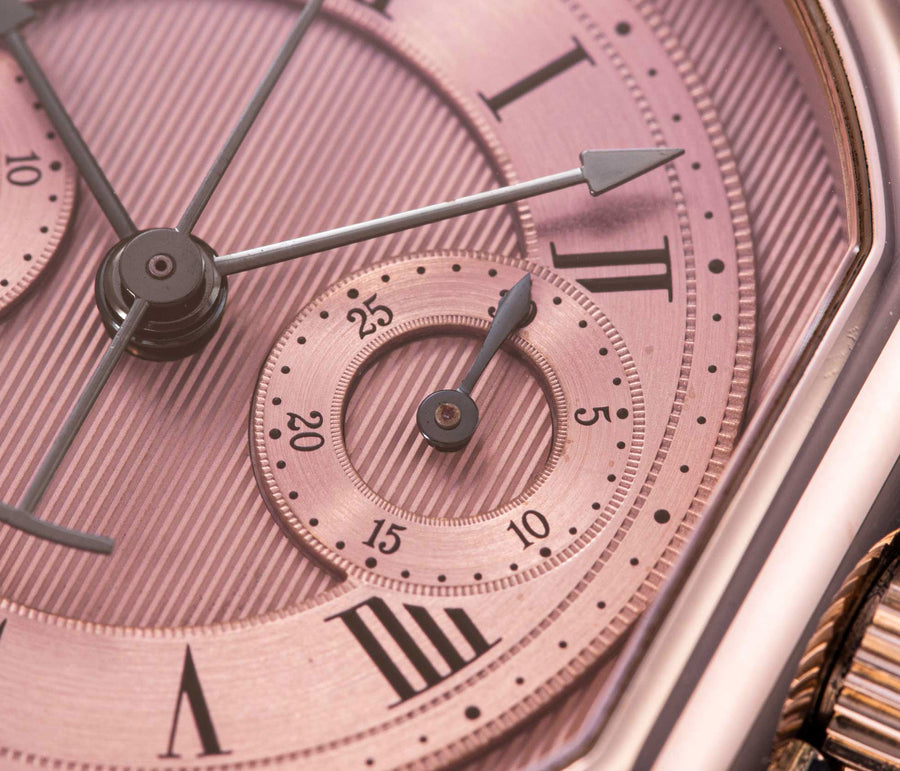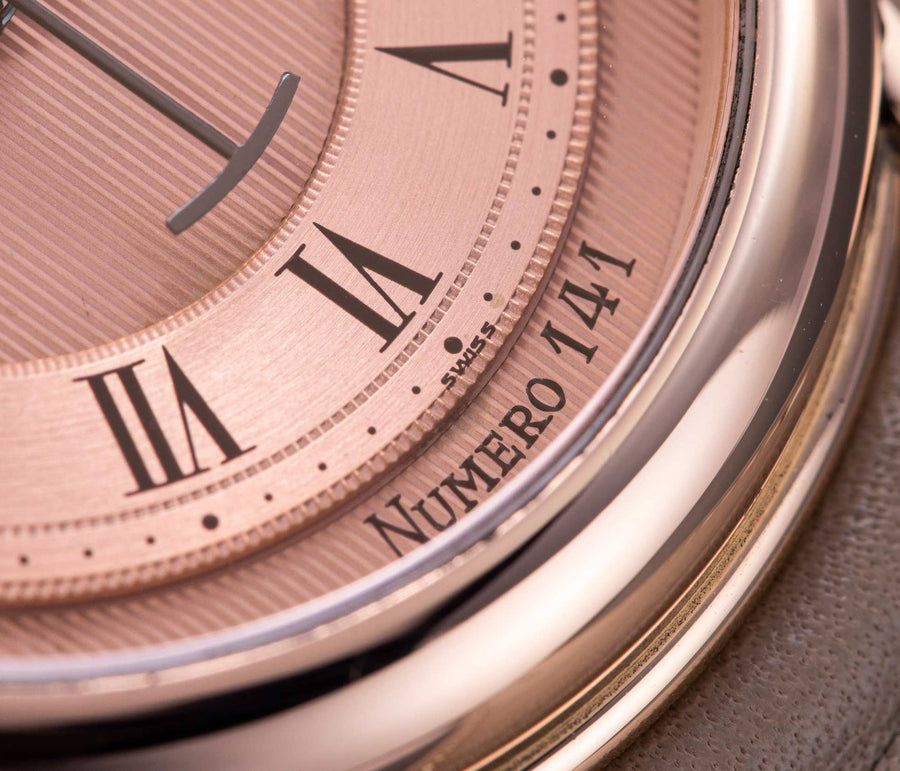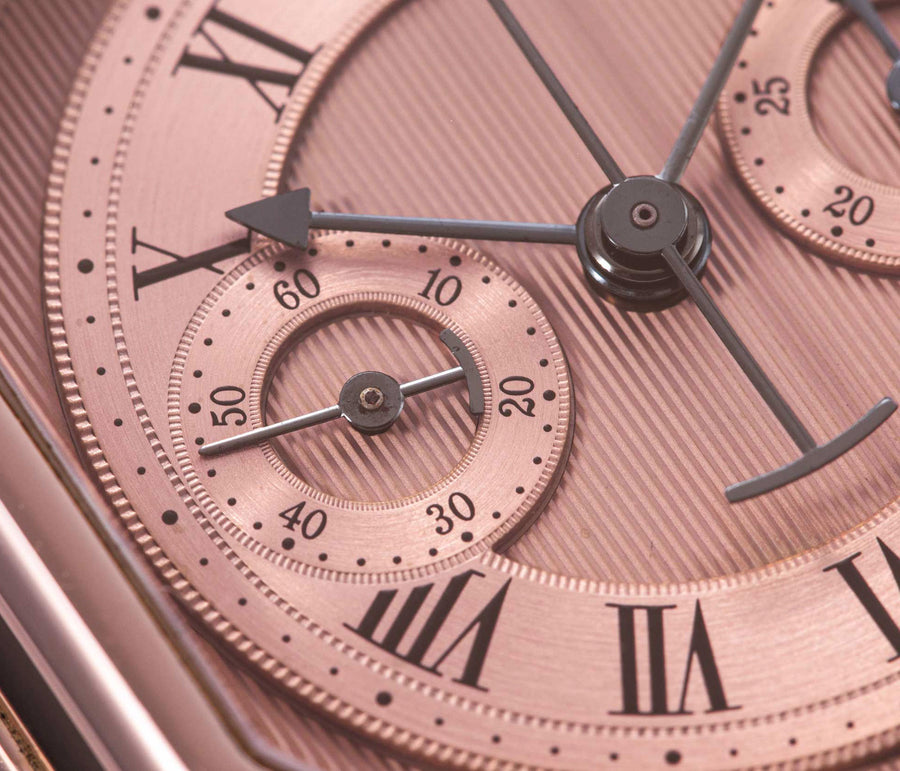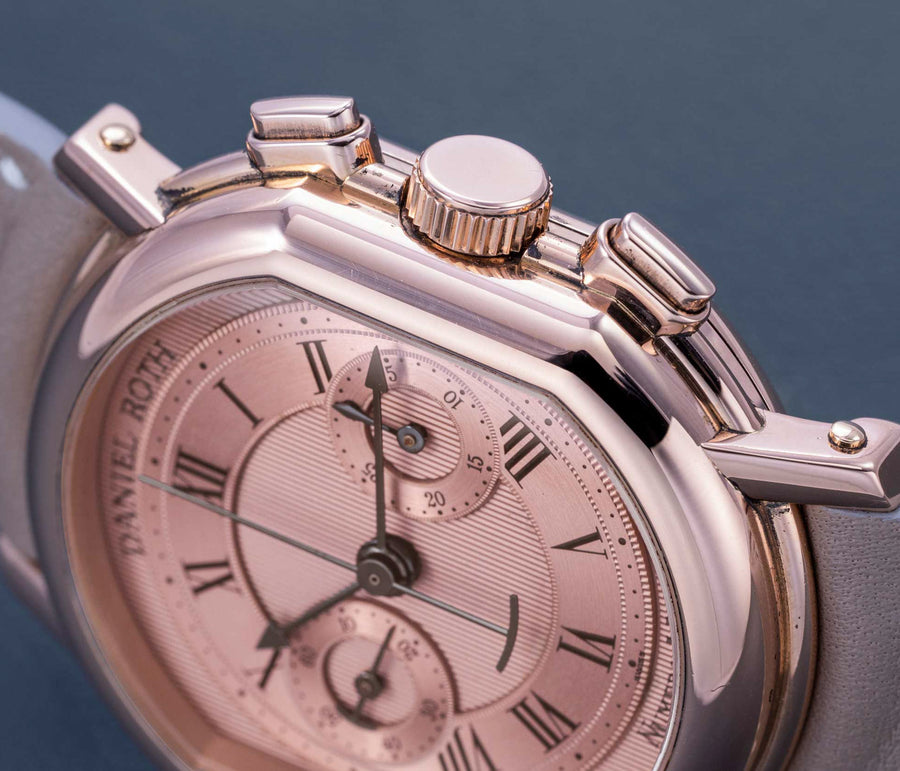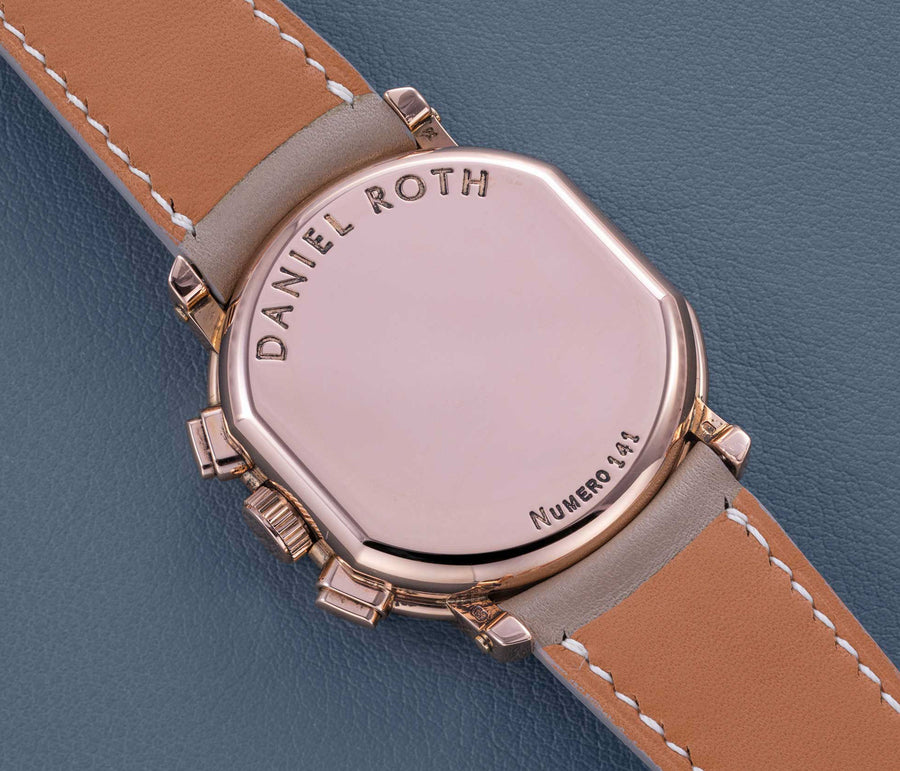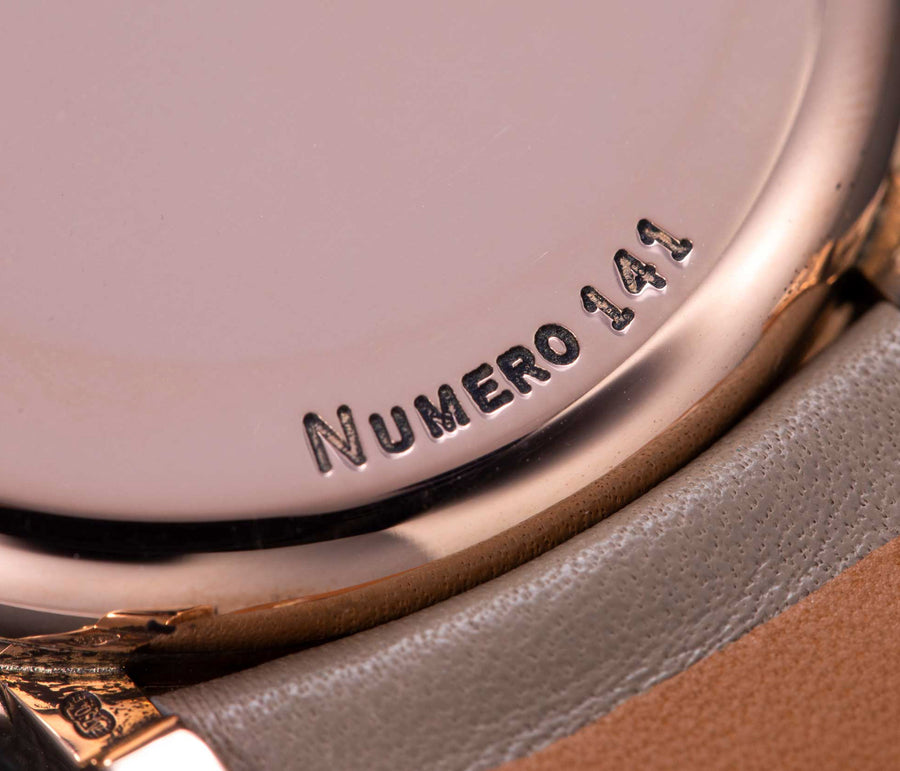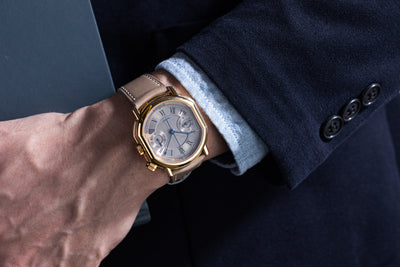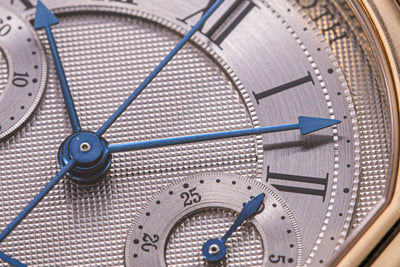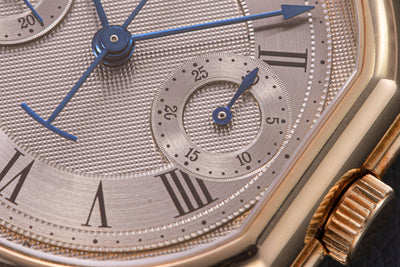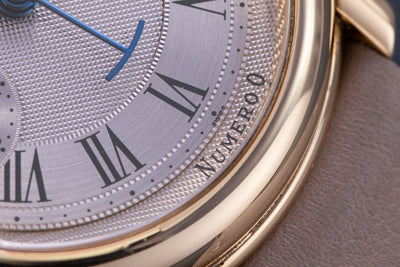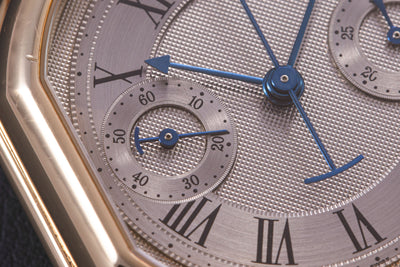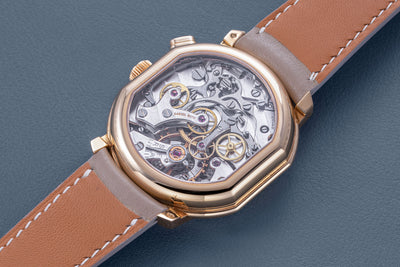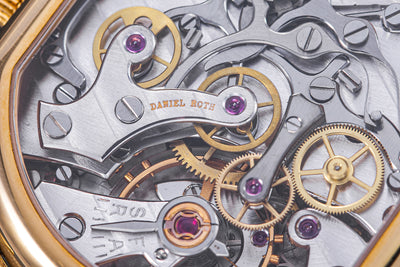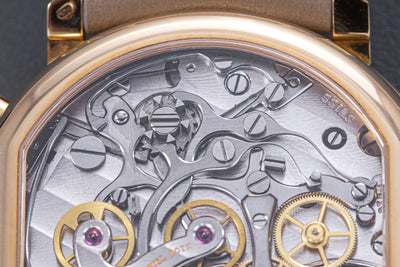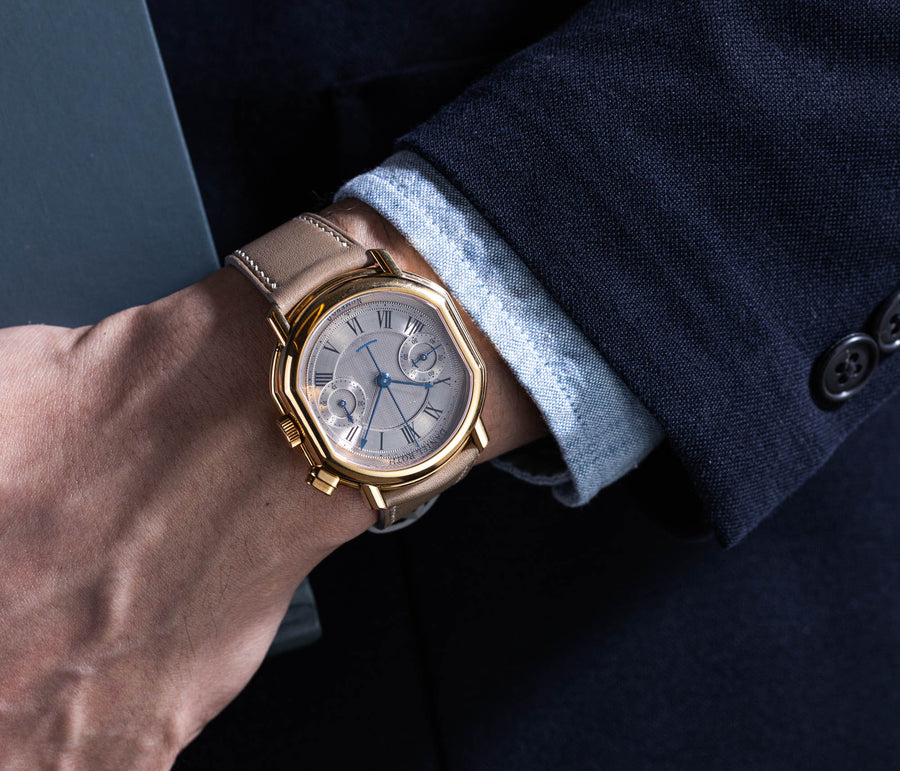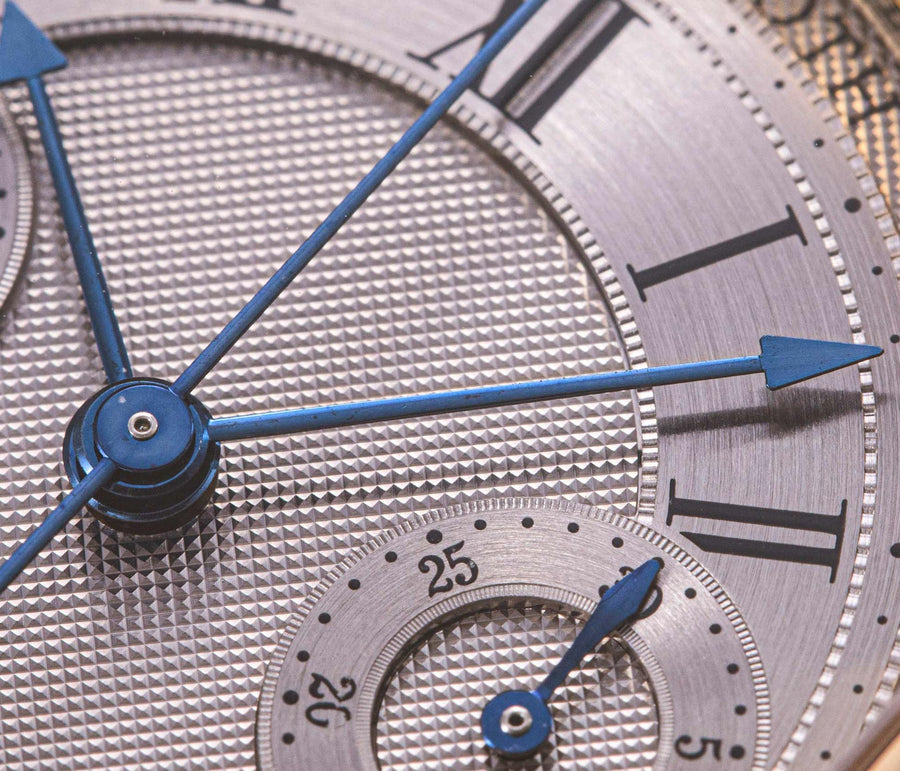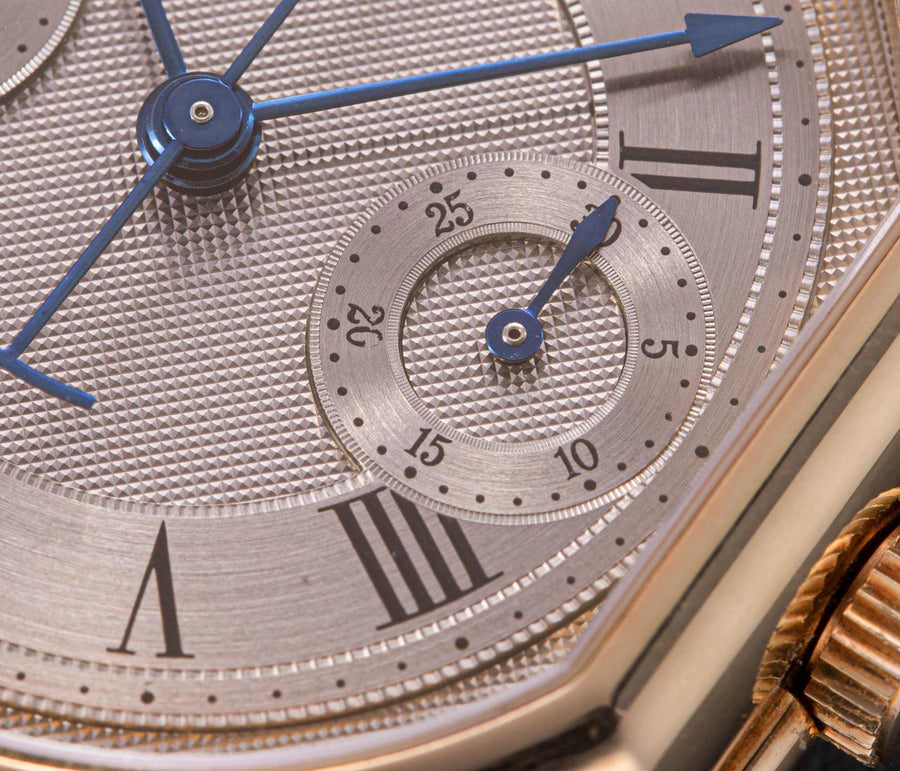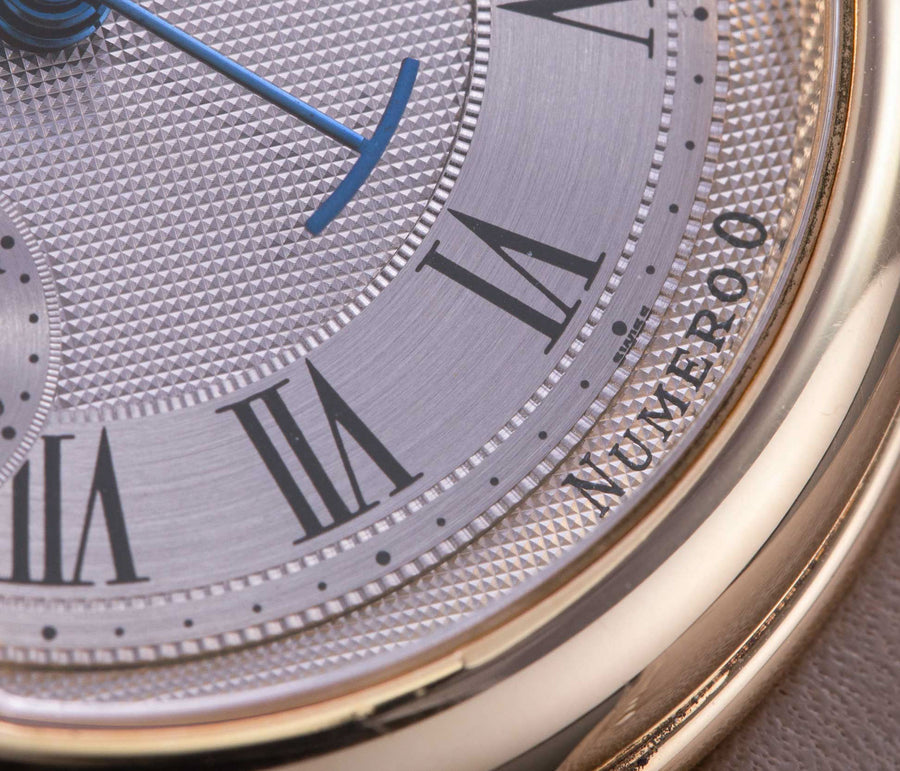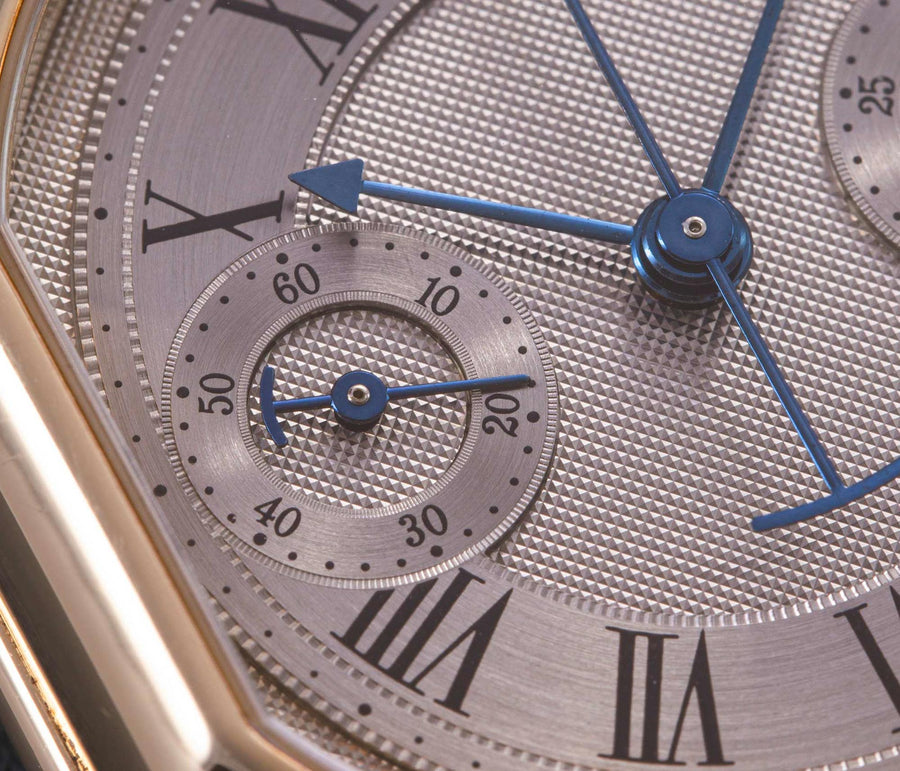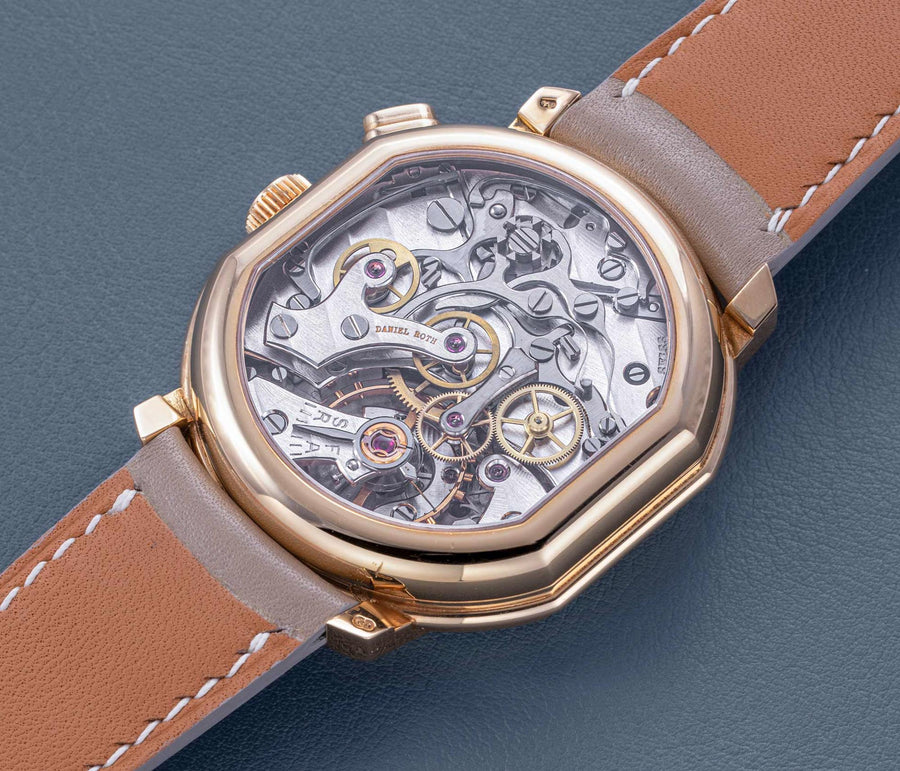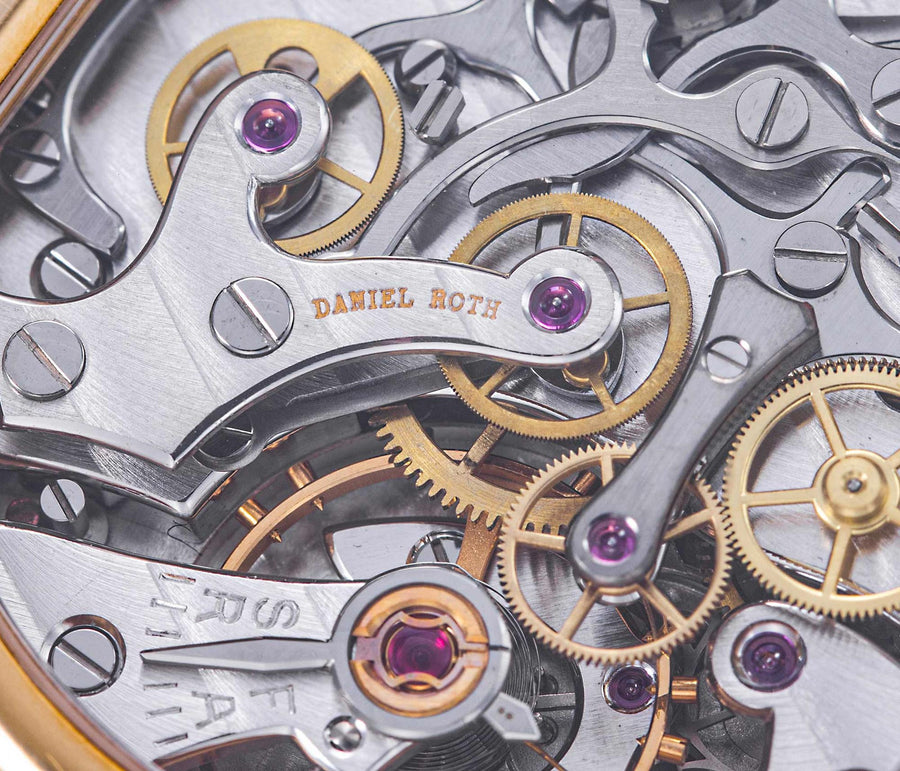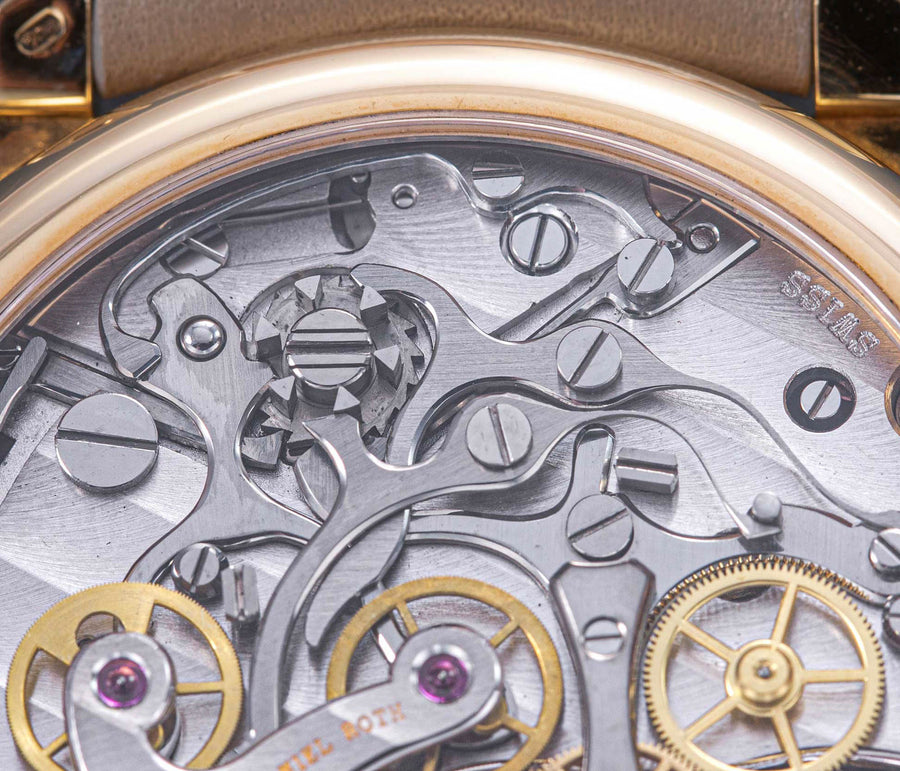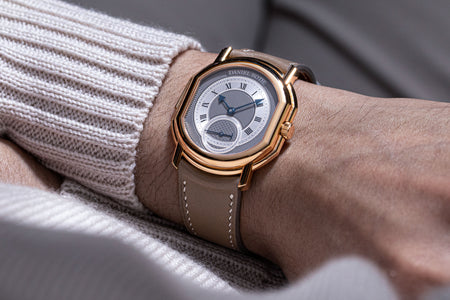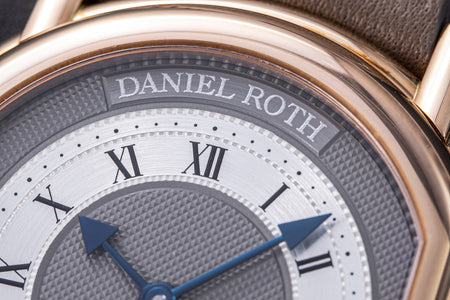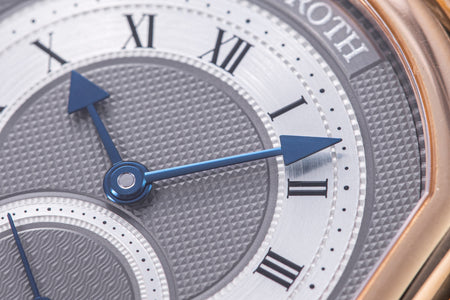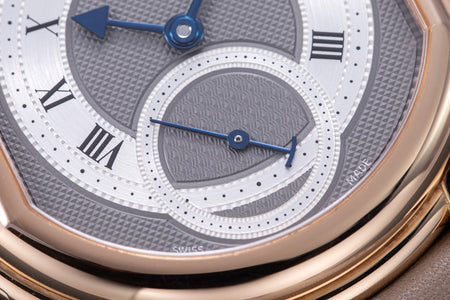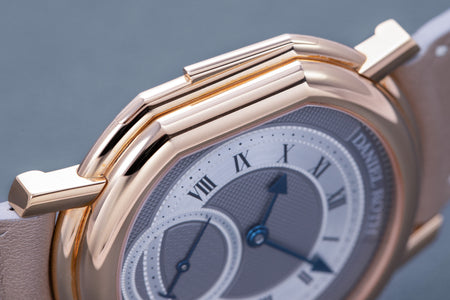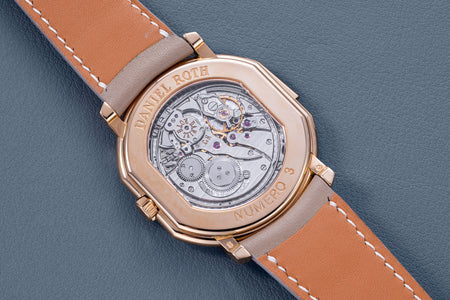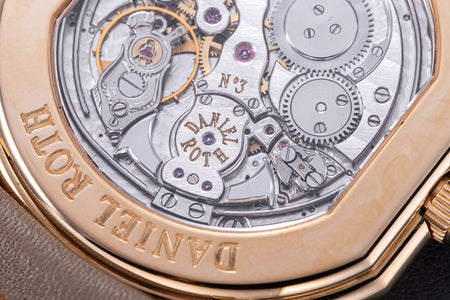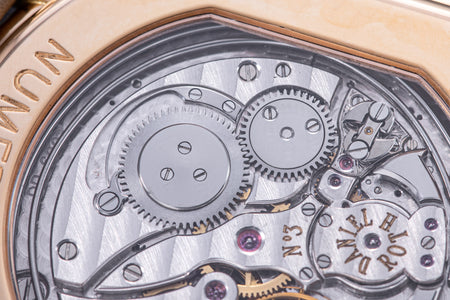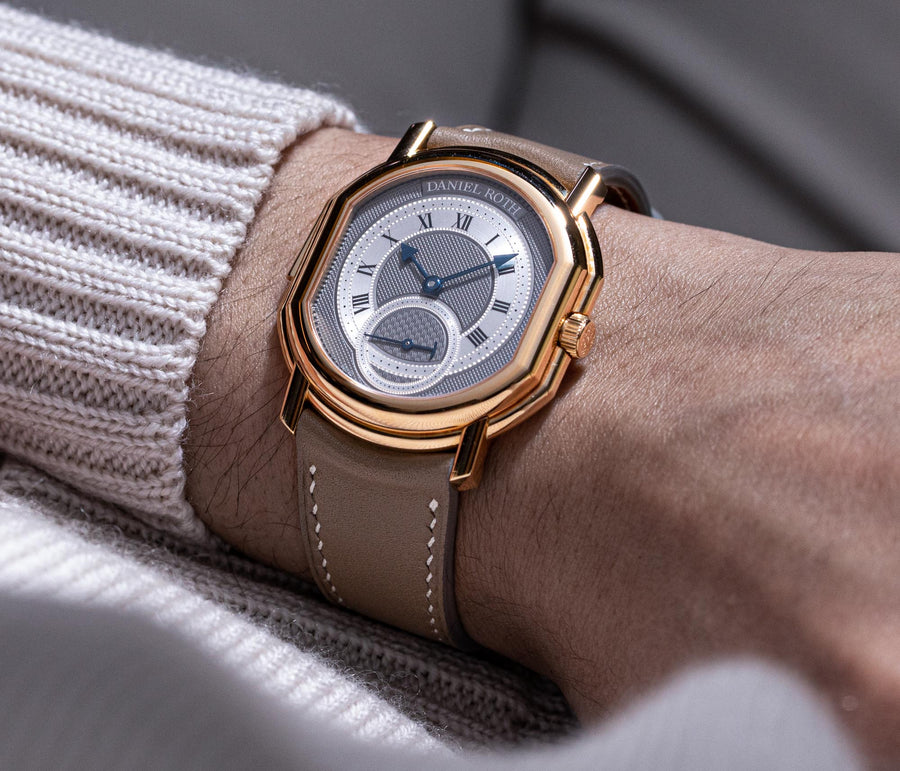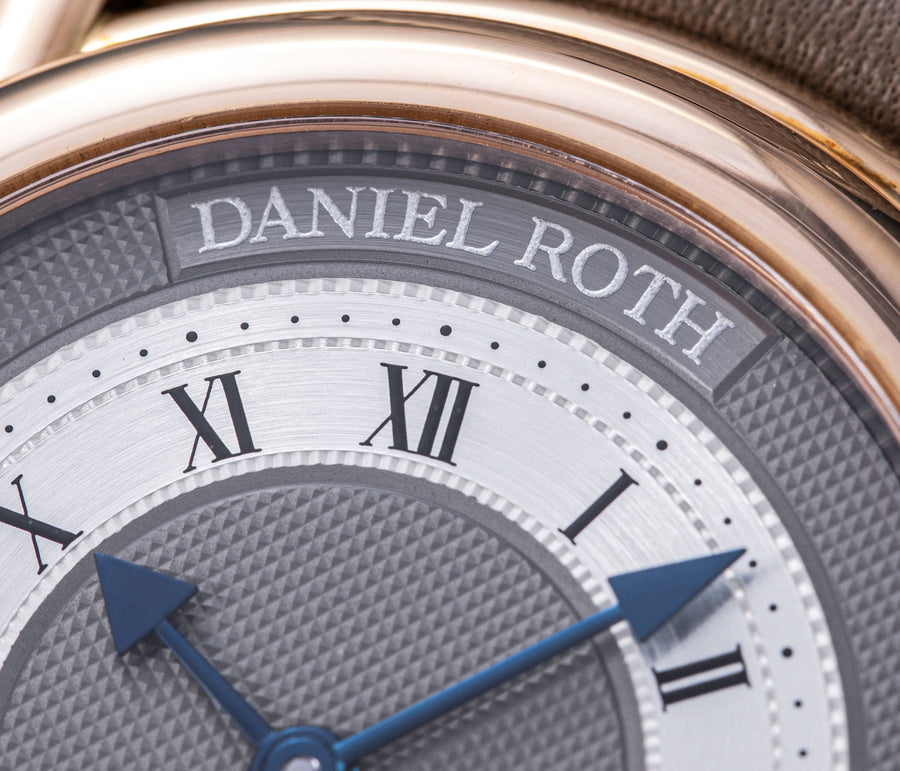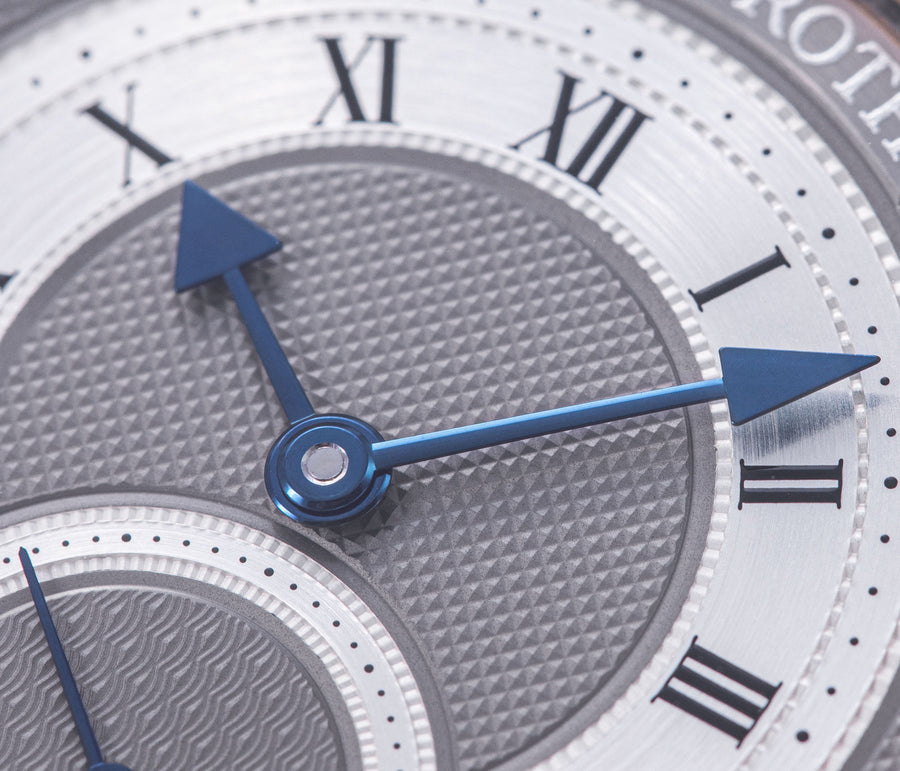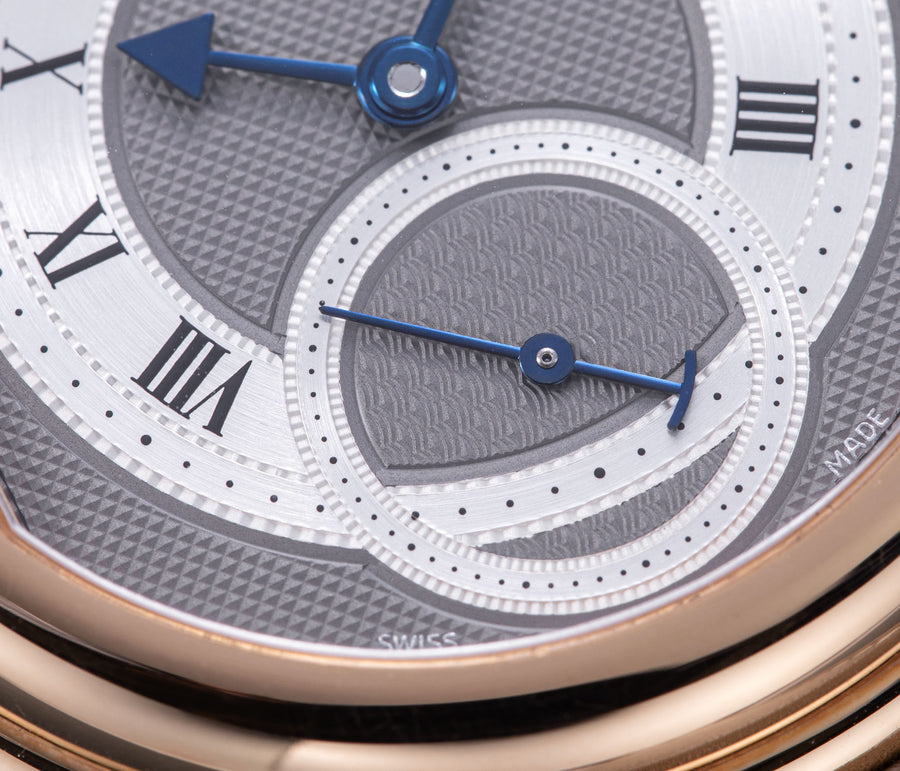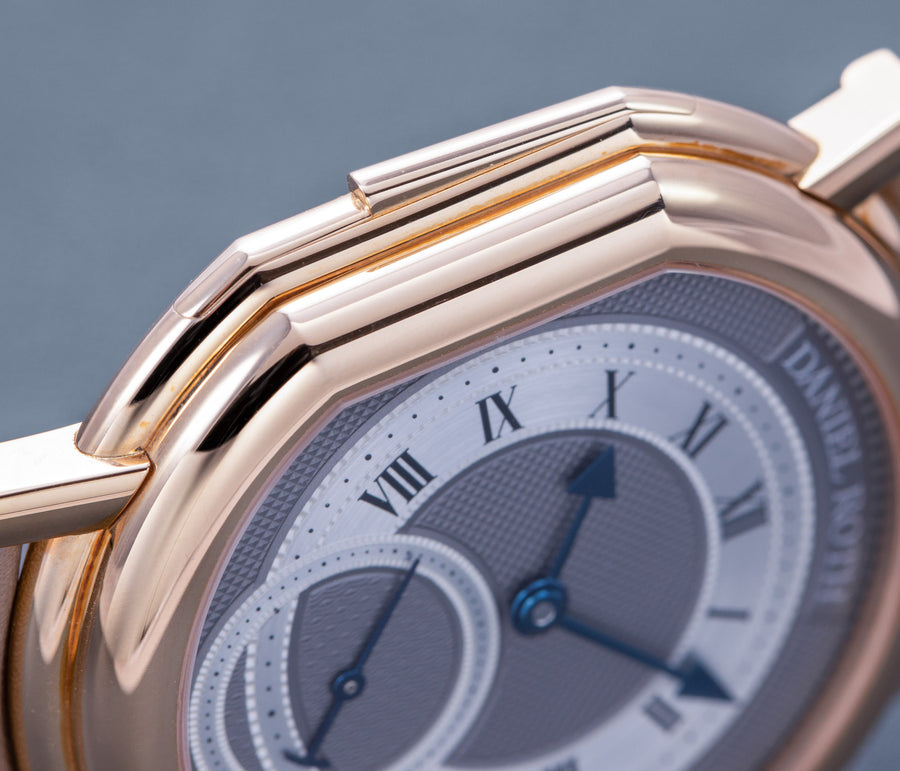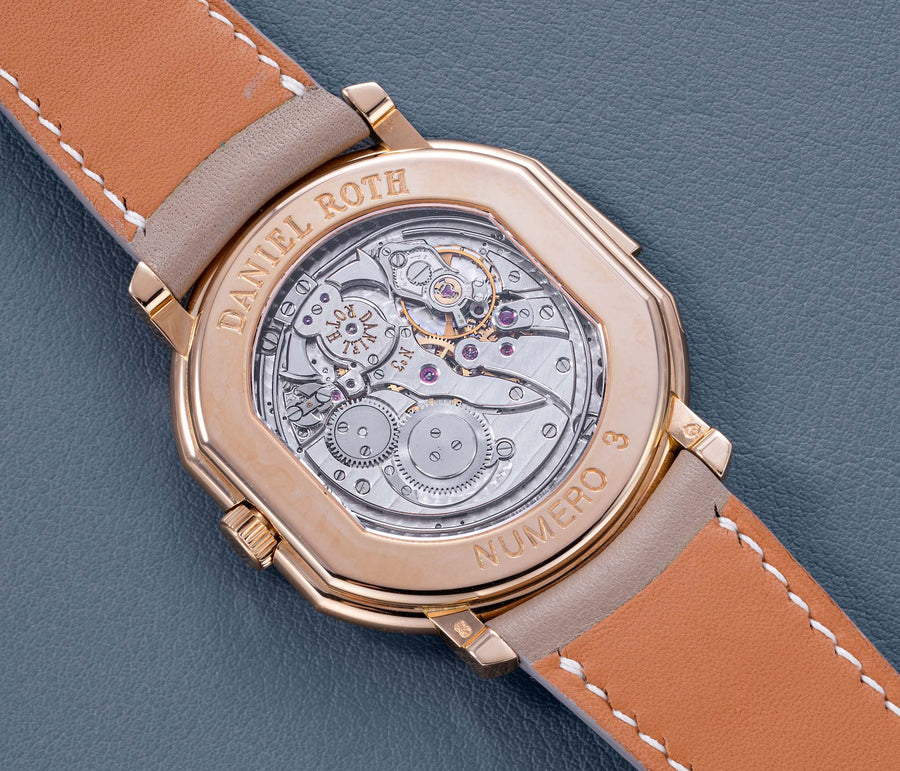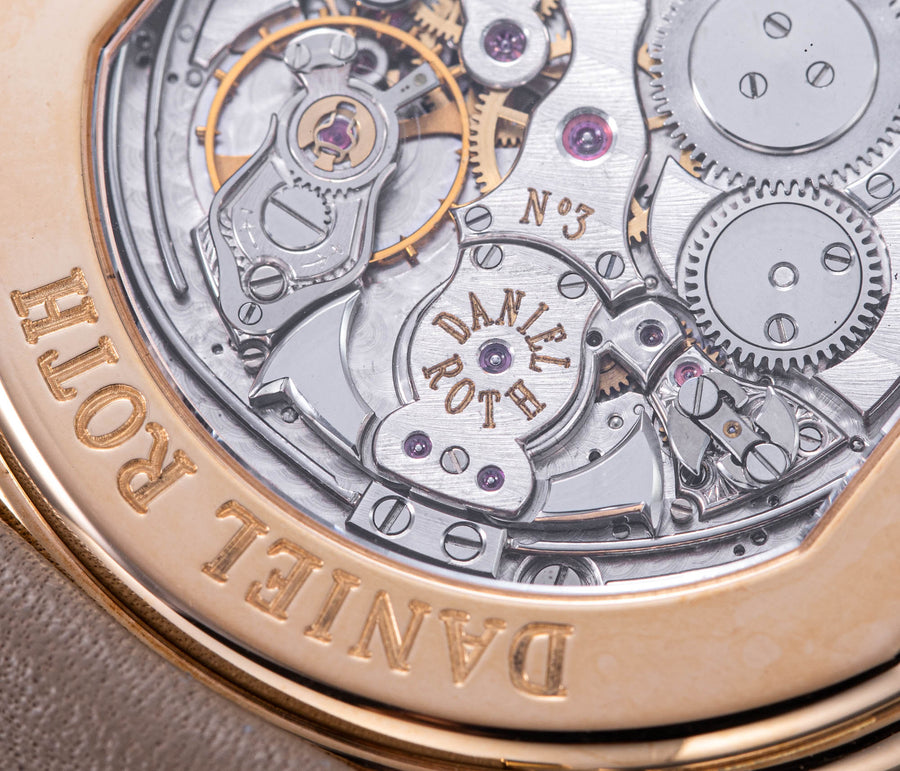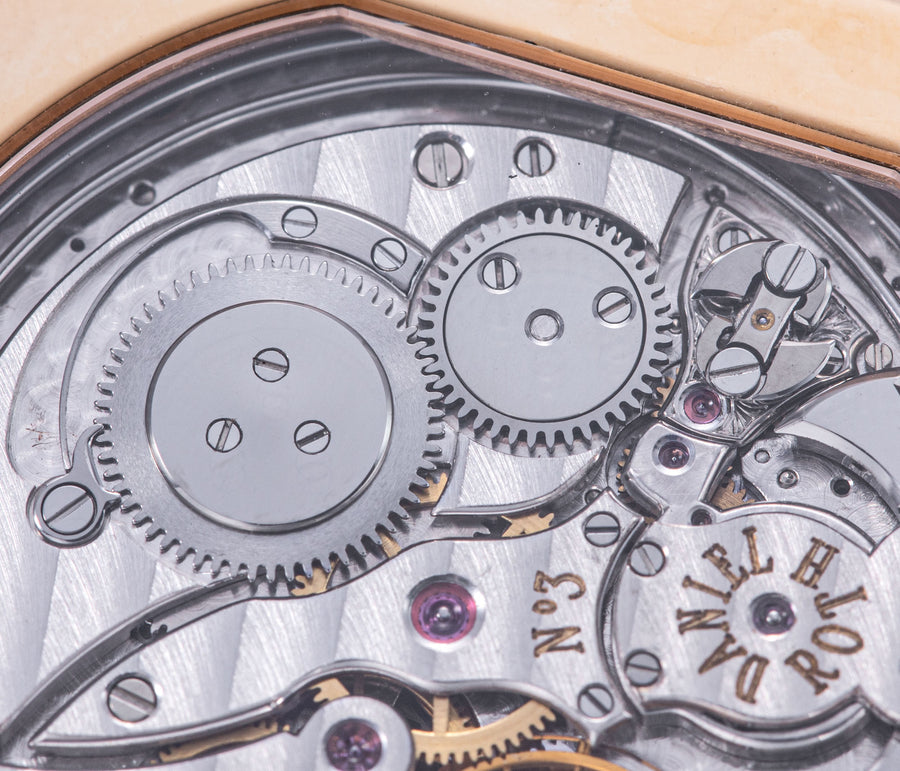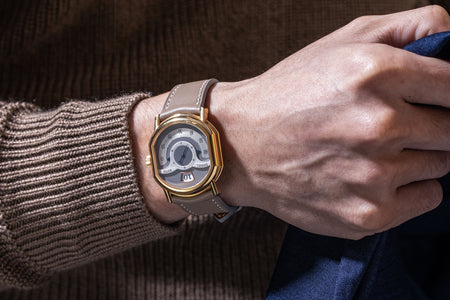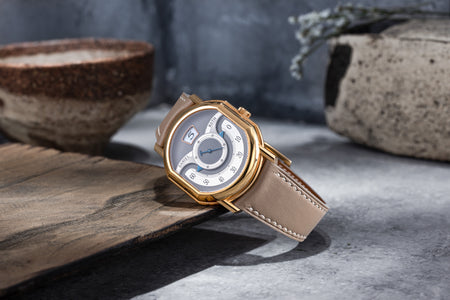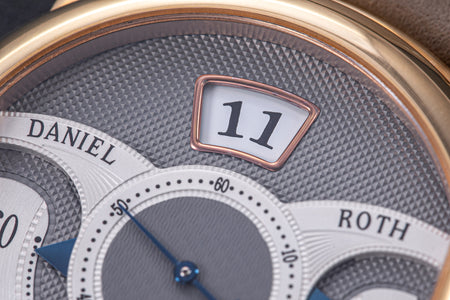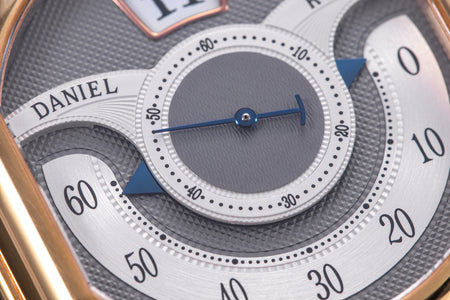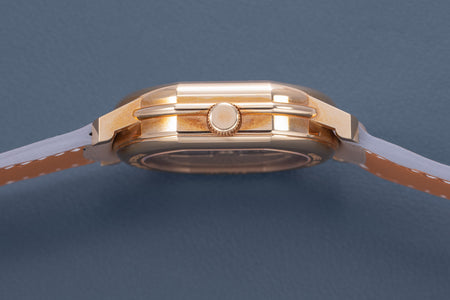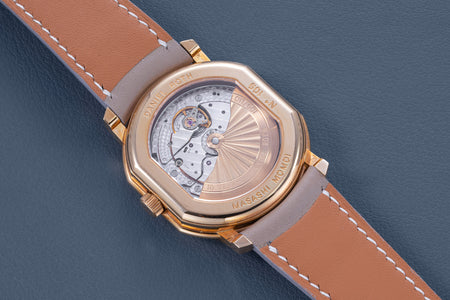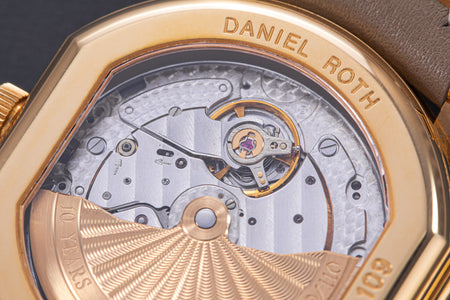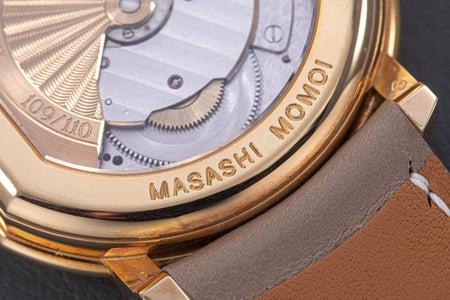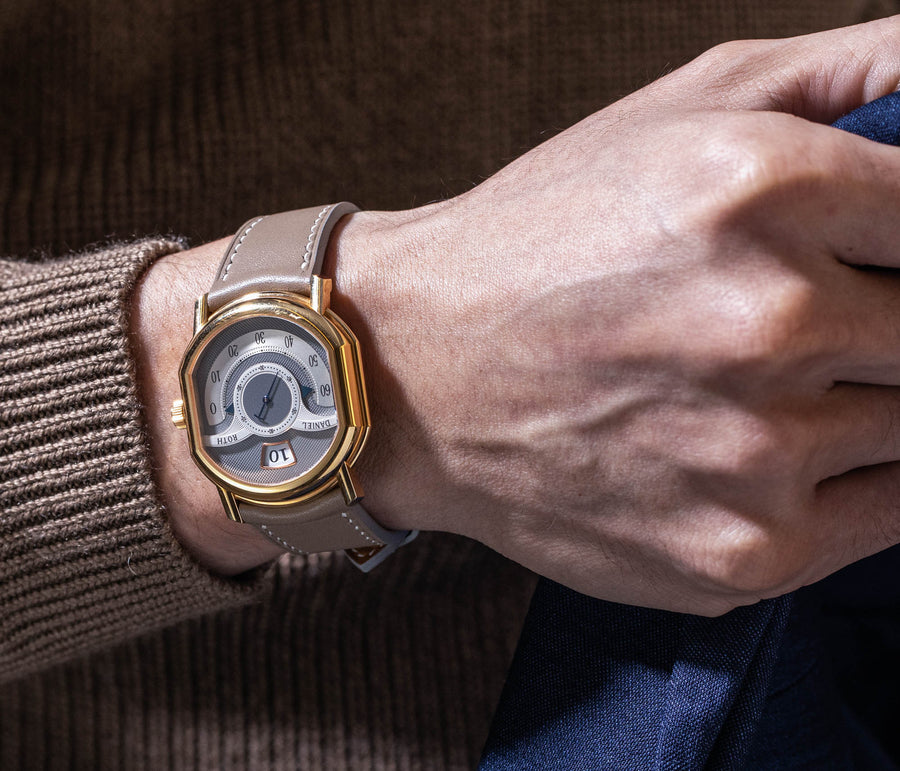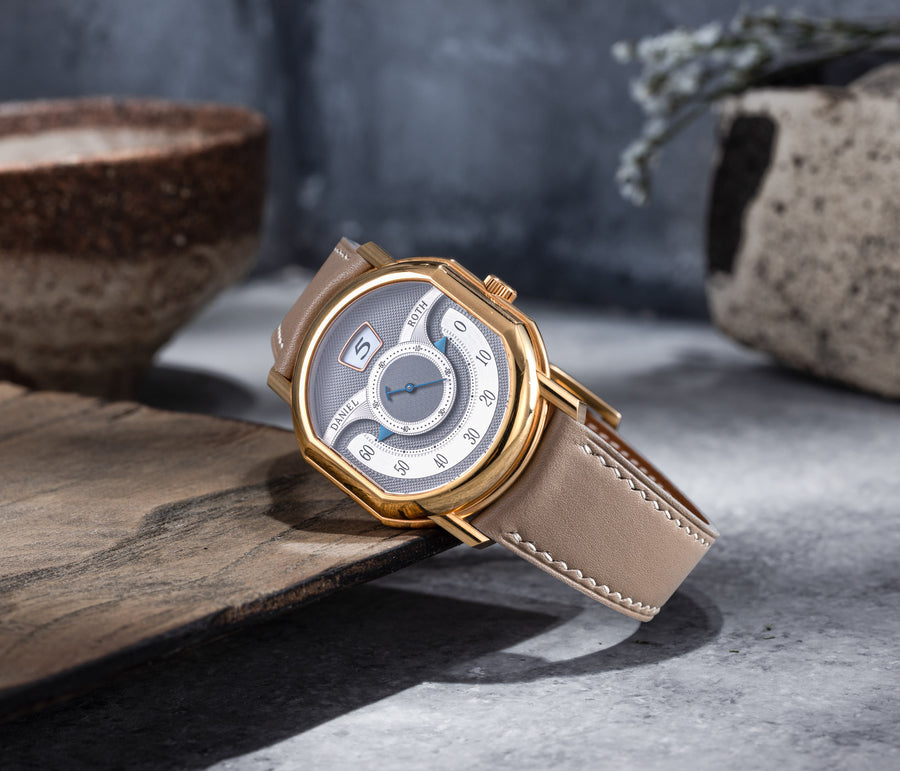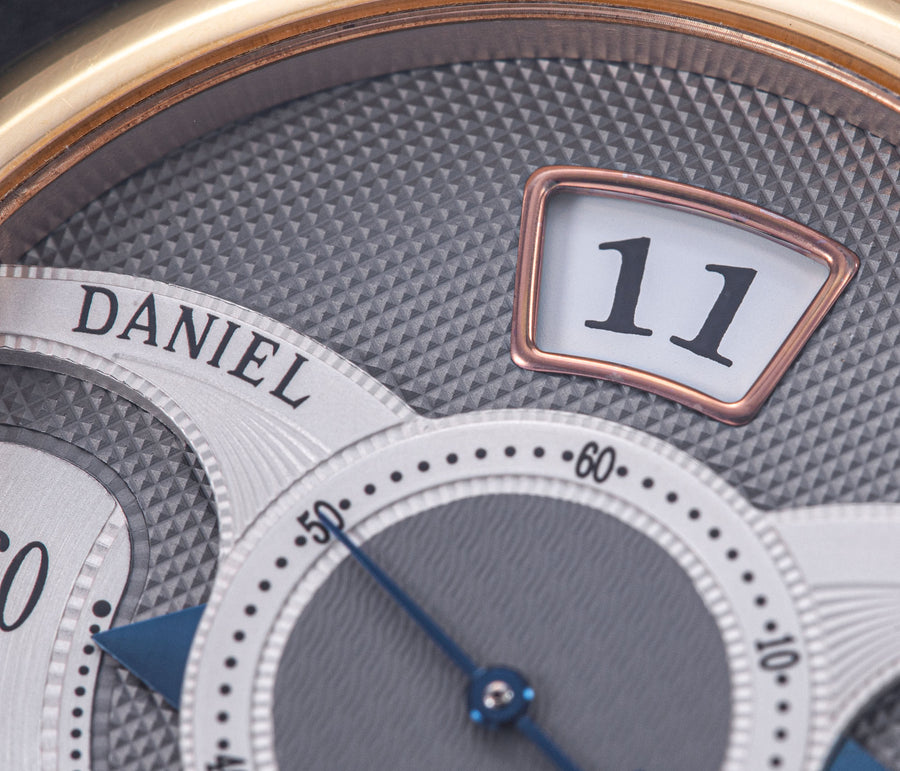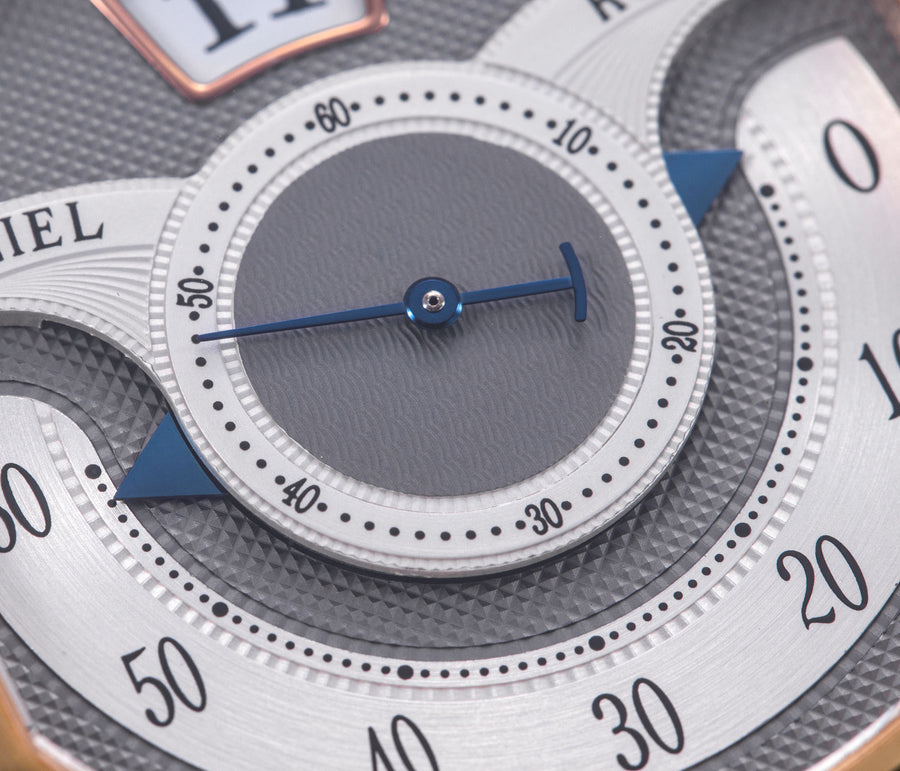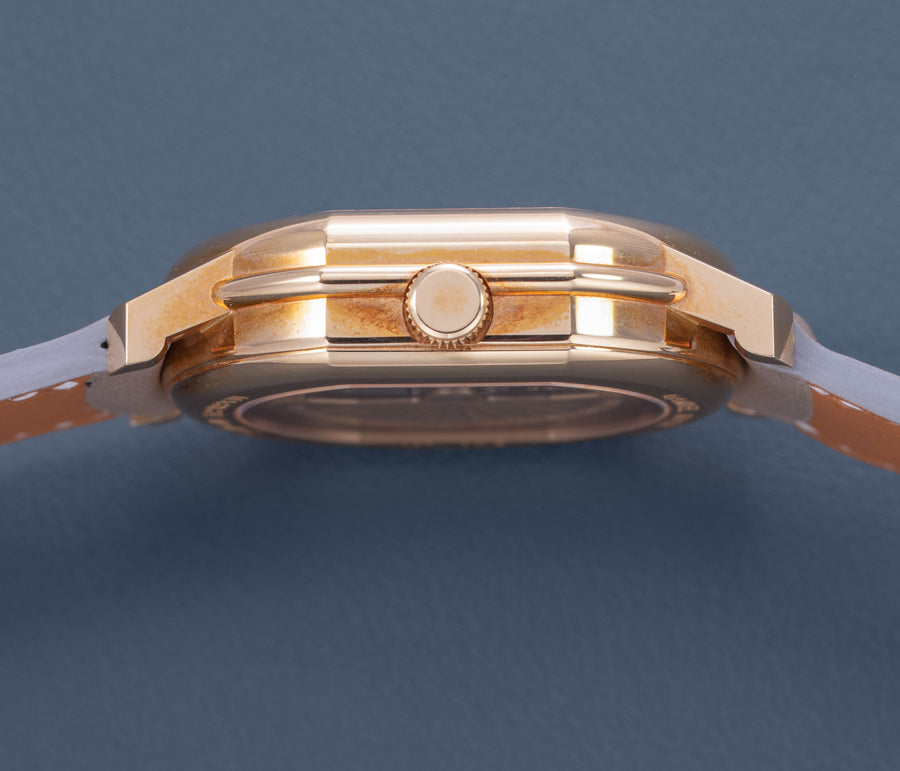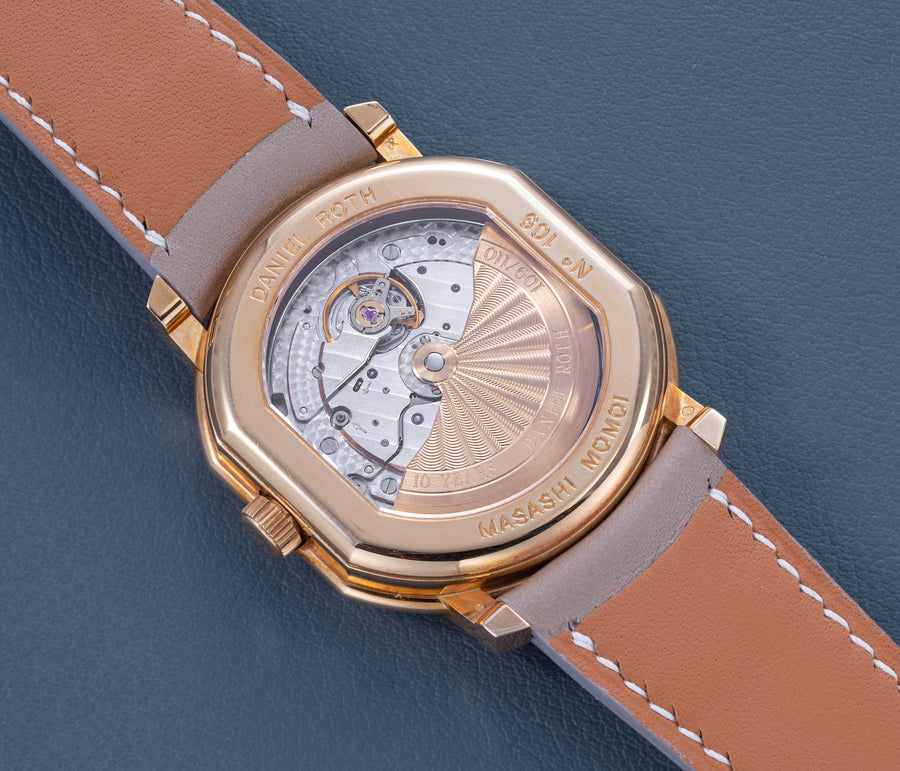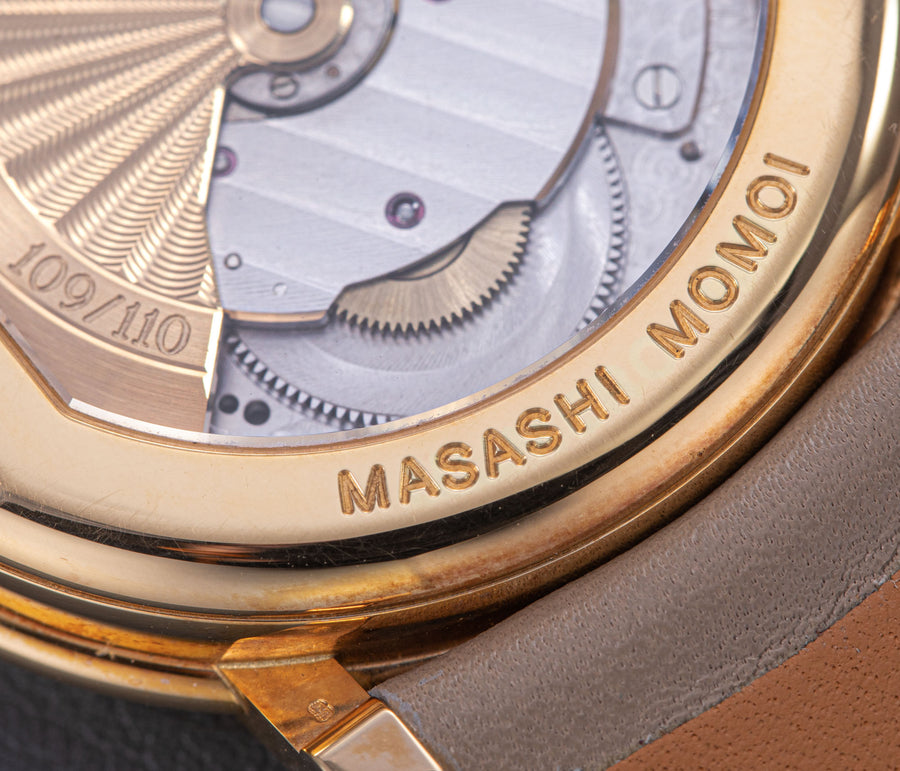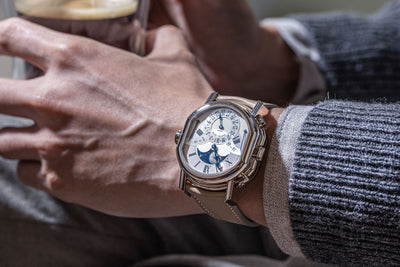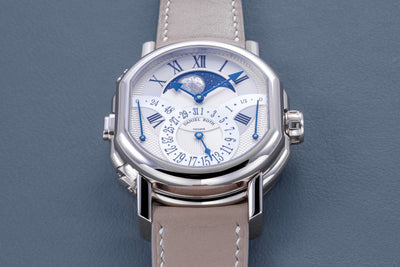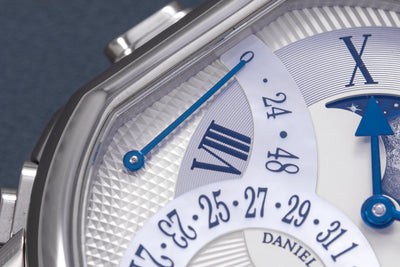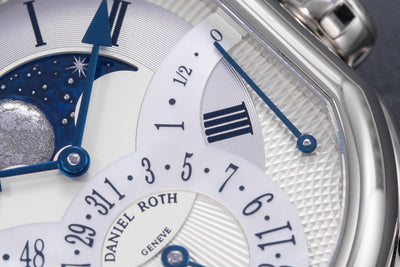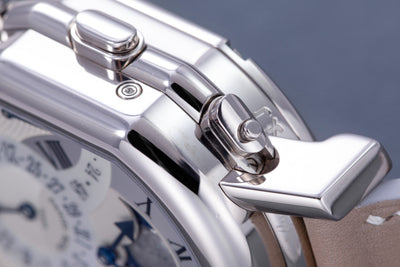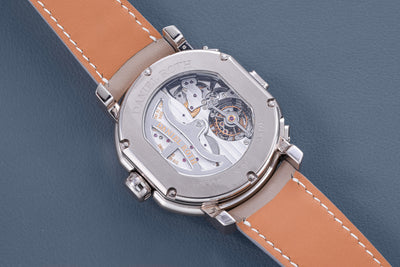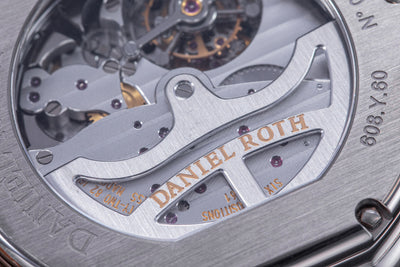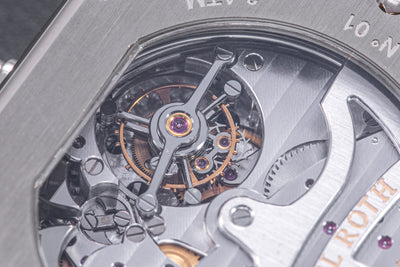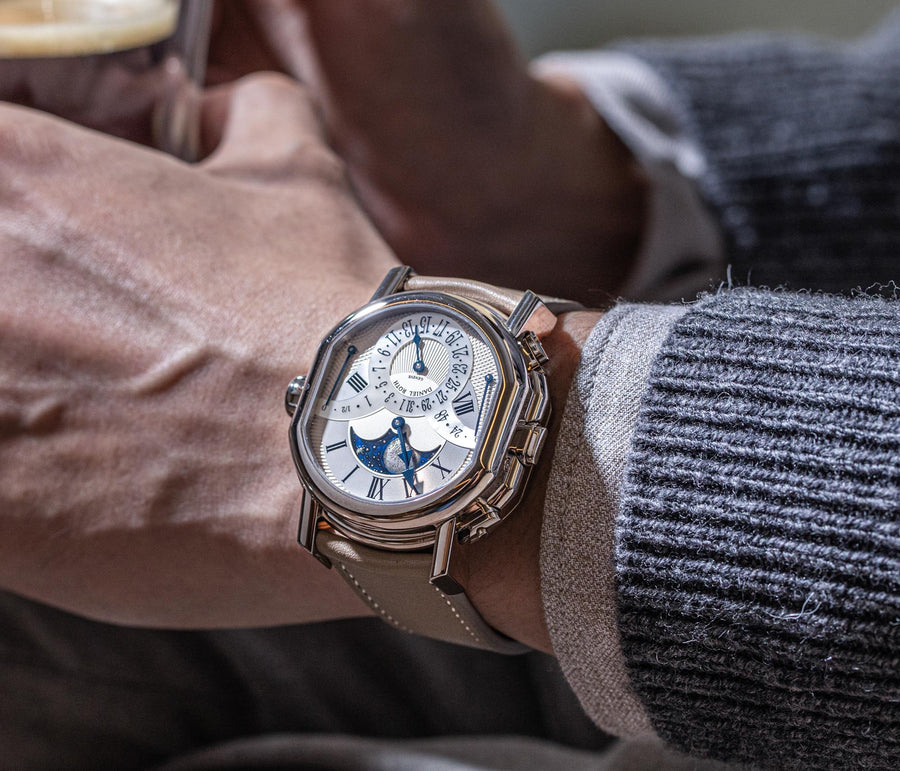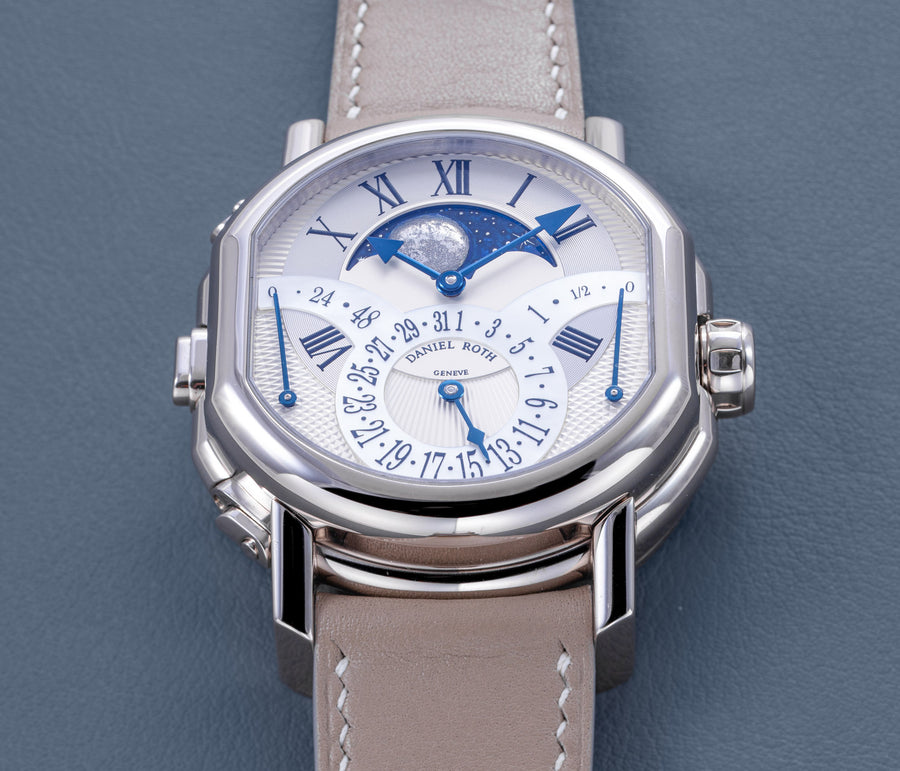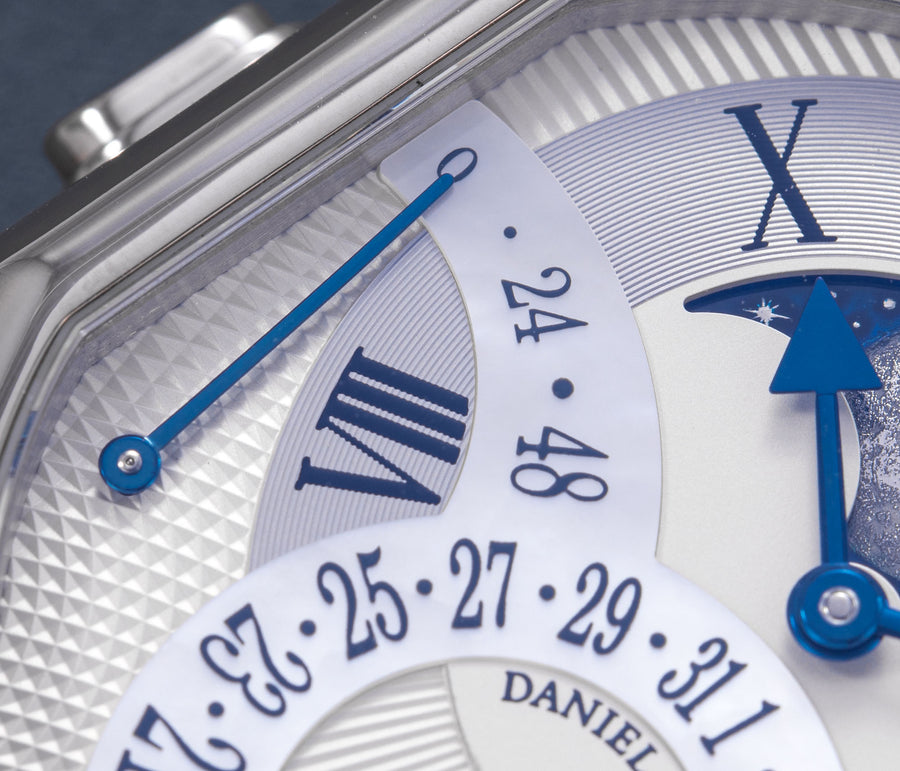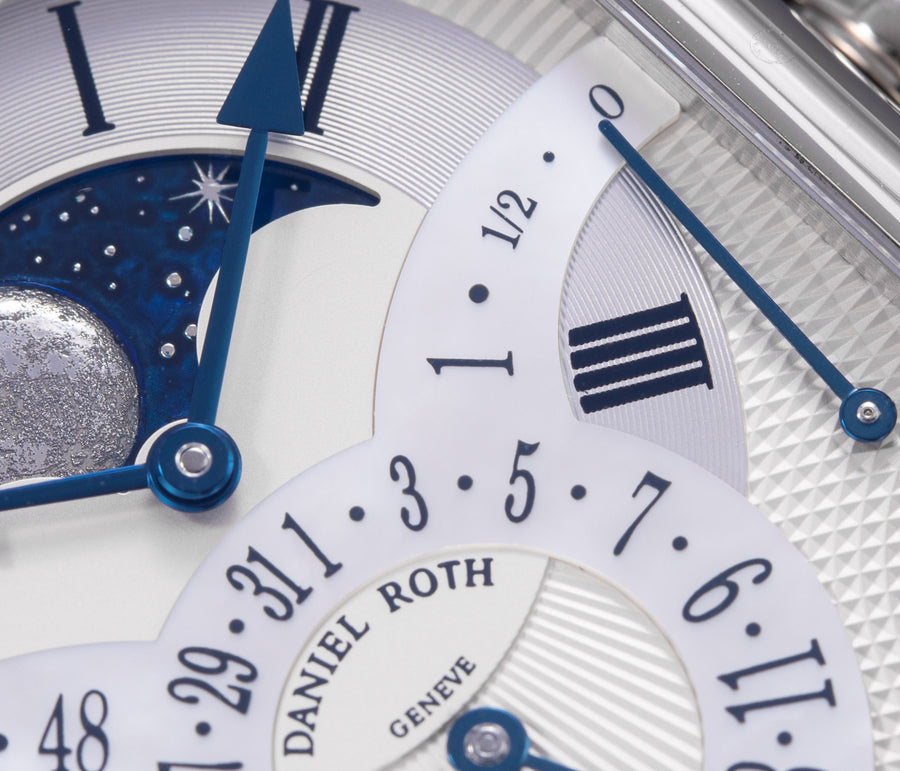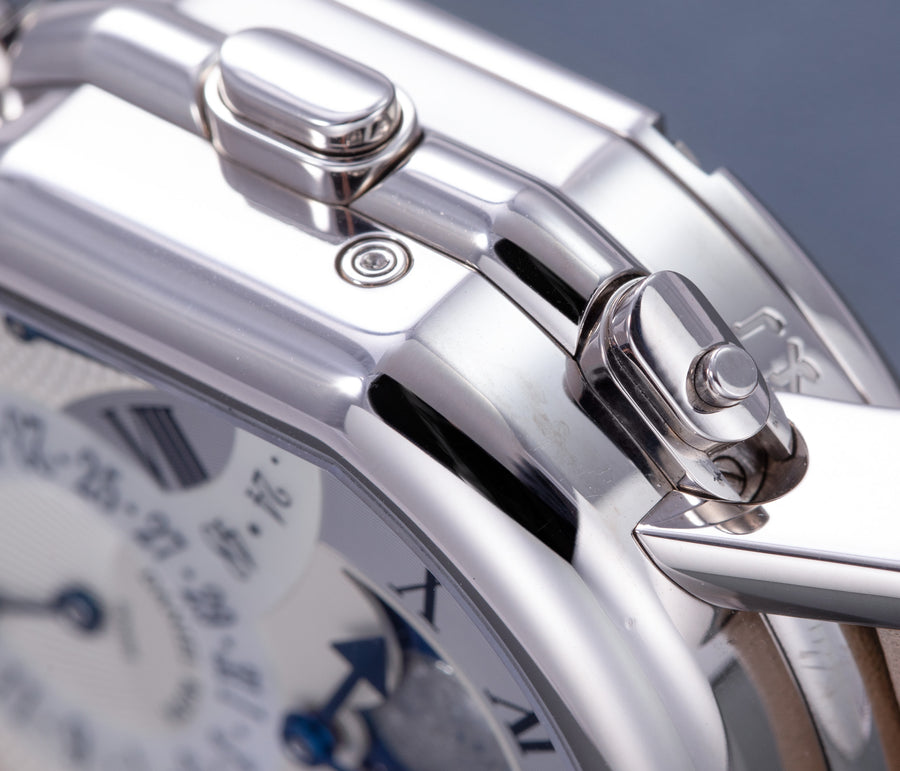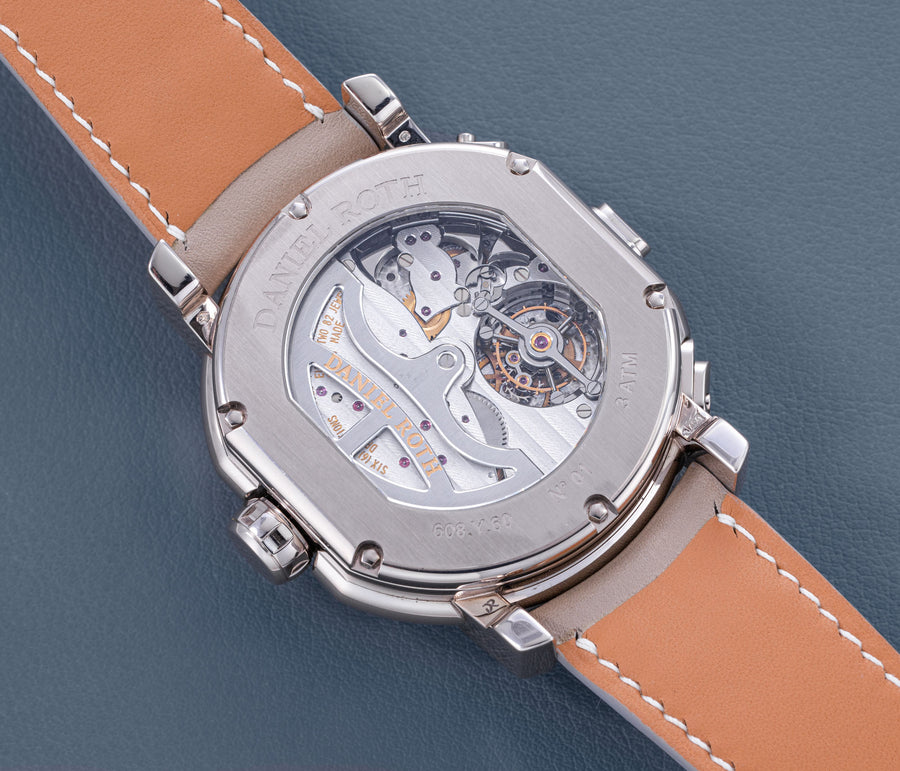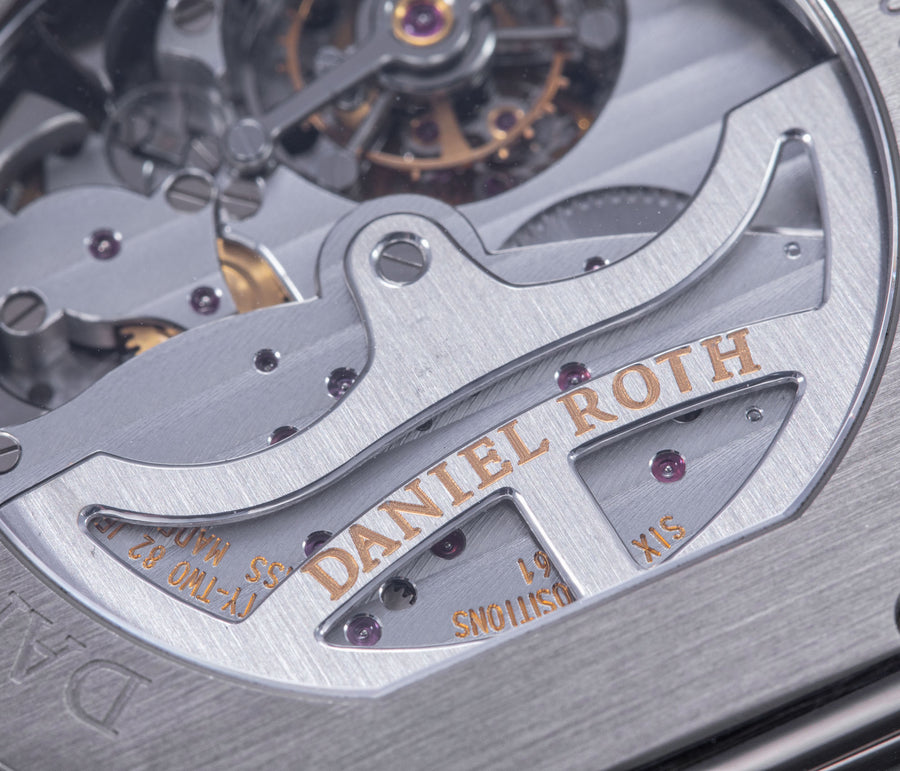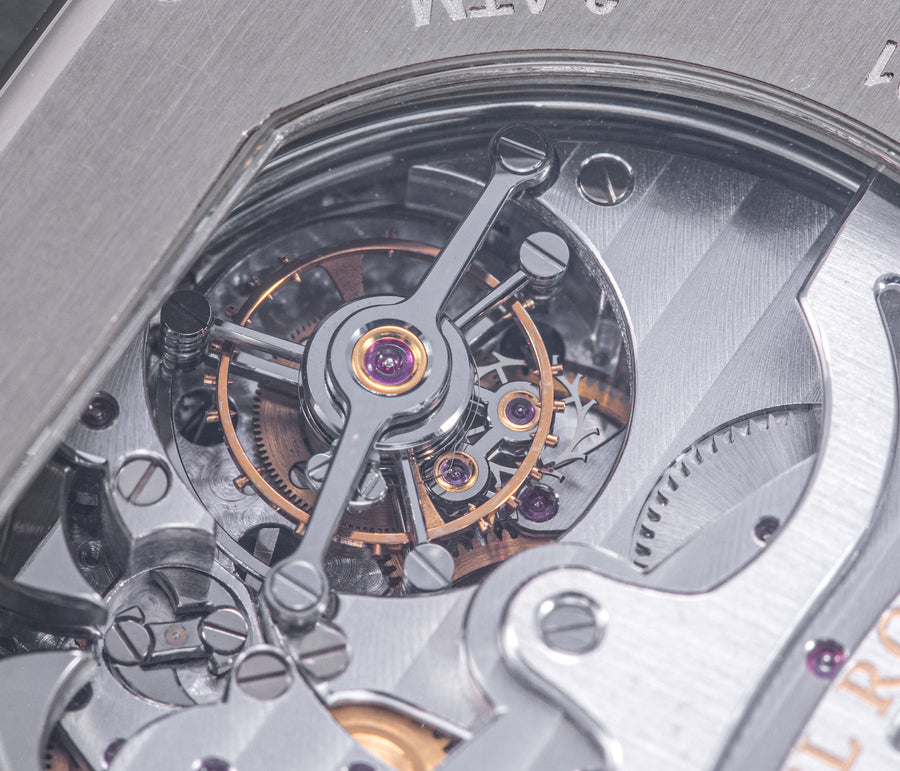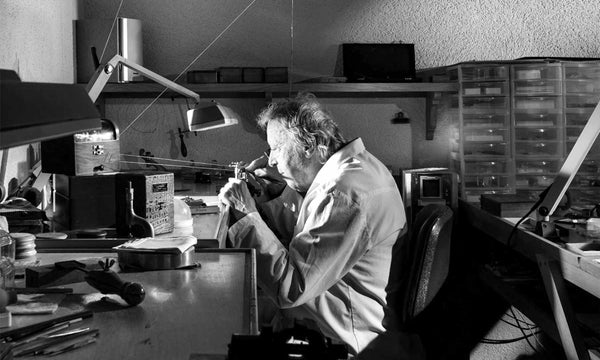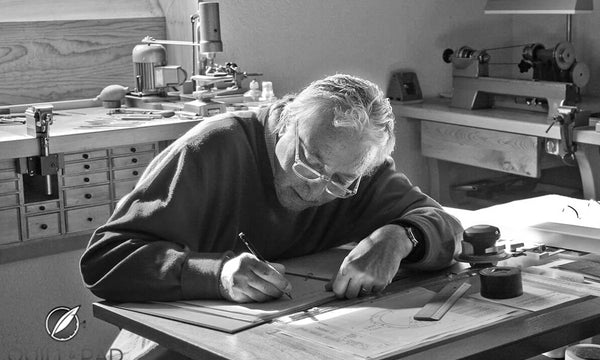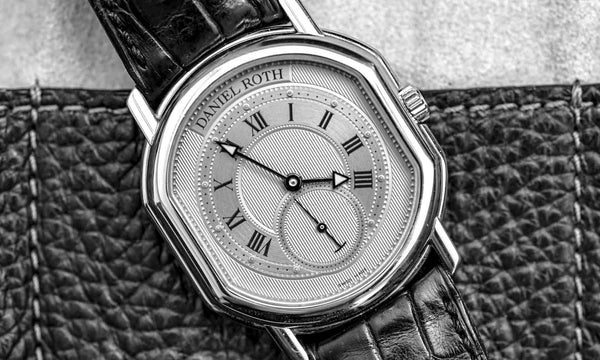"I get to make beautiful watches, at my own pace and with nobody telling me what to do. At the end of the day, all I’m asked is to create something precious. Which obviously takes time."
Daniel Roth had a career that paralleled that of Philippe Dufour’s in its early years, but soon after diverged. Born in the South of France in 1946, Roth moved to the Vallee de Joux in 1967, where he worked briefly for Jaeger-LeCoultre and subsequently at Audemars Piguet.
Earlier than many of his peers, Roth established his namesake brand in 1989, getting off the ground with an investment from a Swiss trading house that specialised in distributing European goods in Asia. His distinctive style – characterised by engine-turned dials and a double-ellipse case – found early success, though his backers got cold feet soon after and backed out, illustrating a divergence between watchmaker and investor that would repeat itself at other brands in the years to come.
1989
Daniel Roth
Asprey signed Double Face Tourbillon #4
Based on a subscription model, the Asprey Double Face Tourbillon was Roth's first serious commission after establishing his own brand in 1988. Containing 149 component parts and taking over 400 hours to complete a single watch, every Asprey Double Face Tourbillon carried its own COSC rating certificate. This particular example was tested by COSC in April 1989 making it one of the earliest Double Face Tourbillons to have been produced.
In 1994, Daniel Roth was then rescued from bankruptcy by Singapore-based specialist watch retailer The Hour Glass. Two years later, The Hour Glass assumed majority control of Gerald Genta bringing both the Roth and Genta brands under one management in a newly formed company – Manufacture de la Haute Horlogerie (MHH). New ownership provided a brief respite for the Roth brand as in the new millennium, MHH was acquired in its entirety by Bulgari. Not long after, a decision was made to retire the Daniel Roth name altogether.
1994
Daniel Roth
Double Face Tourbillon #7 Limited Edition in Steel
A quartet of watches from the 1990s that all share Lemania movements, reflecting Roth’s time with Breguet, which left him intimately familiar with the calibres made by Nouvelle Lemania, the primary supplier of complicated movements to Breguet from the 1970s until 1992, when Breguet took it over. As a result, practically all Daniel Roth watches of the 1990s were powered by Lemania movements, ranging from contemporary movements like the tourbillon cal. 387, to “new old stock” movements found in the single-button chronograph and retrograde hours.
The crucial period of Roth’s career started in the midst of the quartz revolution when Jacques and Pierre Chaumet, under the strong recommendation of Breguet’s then Director General – Francois Bodet, plucked him from Audemars Piguet to help rejuvenate Breguet in 1975.
Having acquired the grand but sleepy name, the brothers – the ninth generation to run the eponymous jeweller – moved Breguet’s operating headquarters from Paris to Switzerland, with ambitions of turning it into a global luxury brand. Prior to Roth's involvement with the revitalisation of Breguet, Gerald Genta had already been entrusted by the Chaumet brothers in the early 1970s to create several Breguet watches and which formed the foundational style of the brand. By 1986, Roth, together with prototypist Louis-Maurice Caillet had created most of Breguet’s iconic wristwatches including its perpetual calendar and now signature three-hand, one-minute tourbillon.
1993
Daniel Roth
Double Face Tourbillon Skeleton
In addition to the various other case and dial configurations, Roth introduced a double and single-sided variant of his tourbillon in 1992 and 1995, respectively. Surprisingly, Roth’s tourbillons were the only such watches tested and certified by the Contrôle Officiel Suisse des Chronomètres (COSC) during this period of time; indicating the brand’s dual commitment towards furthering both the artistic and technical aspects of watchmaking.
1999
Daniel Roth
Perpetual Calendar White Gold
As the Daniel Roth firm grew, it adapted its timepieces to suit the taste of the era, which meant more self-winding watches, as well as perpetual calendars and chronographs. As a result, the company diversified its movement supply to include Girard Perregaux, which provided the workhorse automatic cal. 3000 found across its model line, including in this Papillon and perpetual calendar. And the firm also turned to Zenith for its famous El Primero, which was found in all automatic Daniel Roth chronographs.
1994
Daniel Roth
Retrograde
Roth’s Reference C127 – a quirky retrograde time-only model, was first unveiled at Baselworld in 1991 and was released two years later in 1993. Made in an array of variations, the unconventional fan-shaped dial layout was said to have been inspired by a Daniels pocket watch. Interestingly the hour hand never obstructs the seconds dial positioned underneath; at 6 o’clock the hour hand swings back to its far-left position.
1992
Daniel Roth
Chronograph Pink on Pink
Following his arrangement with Asprey, Roth introduced the twin-register manually wound chronograph in 1990. Integrating the Lemania ébauche 2320 – a natural choice for the watchmaker having previously used the 2320 in his early tourbillons, and during his stint at Breguet. Whilst seen with Clous de Paris guilloché dials, the majority of Roth’s early twin-register manually wound chronographs feature his signature pinstripe-patterned dials. Referred to within the manufacture as the reference 147, this pink on pink example is the rarest of Roth's bicompax chronographs.
1990
Daniel Roth
Monopusher Chronograph #0
Also hailing from 1990, the split-second mono-pusher retains many of the stylistic cues of its twin-pusher equivalent, albeit in a much more limited run. The mono-pusher streamlined the operation of one of Roth’s most popular watches and further rounded out the brand's collection.
1998
Daniel Roth
Ultra Slim Minute Repeater #3
The Minute Repeater Ultra Slim and the Grande & Petite Sonnerie + QP were born of the merged entity of Daniel Roth and Gerald Genta, after their then owner The Hour Glass consolidated both brands into one factory in Le Sentier in 1998. Though both timepieces are branded Daniel Roth, they are equipped with movements originally developed by Gerald Genta in the 1990s.
1999
Daniel Roth
Papillon Pink Gold
Unveiled to celebrate the brand’s tenth anniversary, the jumping hour, retrograde Papillon takes its name from the French word for butterfly. The Papillon was one of the last watches introduced before Daniel Roth’s departure from the brand in 2001. Limited to 250 pieces, Roth released 110 in rose gold, 110 in white gold and 30 in platinum.
2000
Grande & Petite Sonnerie + perpetual calendar
The grande sonnerie calibre was launched in 1994 by Gerald Genta, combining the grande et petite sonnerie carillon on four hammers and gongs with a tourbillon and perpetual calendar, making it the most complicated wristwatch movement in the world at the time. The minute repeating movement, on the other hand, dates to 1981, when it was launched as the thinnest repeating movement ever. That said, the calibre found in this wristwatch is a later movement after the original was re-engineered to improve its robustness.
2024
Souscription tourbillon yellow gold
The Daniel Roth Tourbillon Souscription in yellow gold marks a thoughtful return to form, echoing the Maison’s early ideals through a modern lens. Crafted in the signature ellipsocurvex case, it features the in-house DR001 calibre—a hand-wound tourbillon movement developed with La Fabrique du Temps Louis Vuitton, uniting classical watchmaking codes with contemporary precision. The solid yellow gold dial, produced under the direction of Kari Voutilainen, showcases hand-executed guilloché and a vertically oriented regulator-style layout, articulating Roth’s enduring design language with clarity and grace.
2025
Extra Plat Rose Gold
The Daniel Roth Extra Plat Rose Gold builds on Mr. Roth's legacy of refined dress watches, housed in the signature double-ellipse case rendered in warm 5N rose gold. The case remains faithful to the original ref. 2107 in size, employing traditional welded-lug construction with downward-curved lugs for a comfortable fit. The solid white gold dial features hand-executed pinstripe guilloché framed by a rose gold chapter ring with blackened hands and markings for contrast. Visible through the sapphire caseback is the cal. DR002, developed by La Fabrique du Temps with thick, graceful bridges adorned with rounded anglage, a black-polished crown wheel and ratchet wheel, and a bar-type click; technically, it features a free-spring balance, 4Hz beat rate, and 65-hour power reserve.
LEARN MORE
DISCOVER MORE

The Unassuming Finn
Kari Voutilainen
Enter Room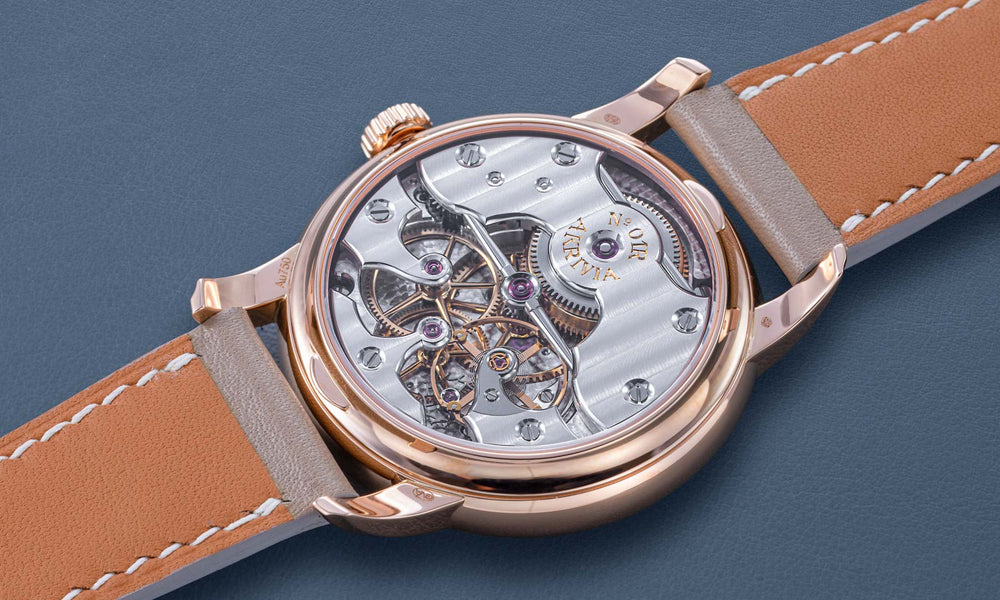
The leader of the next gen
Rexhep Rexhepi
Enter Room